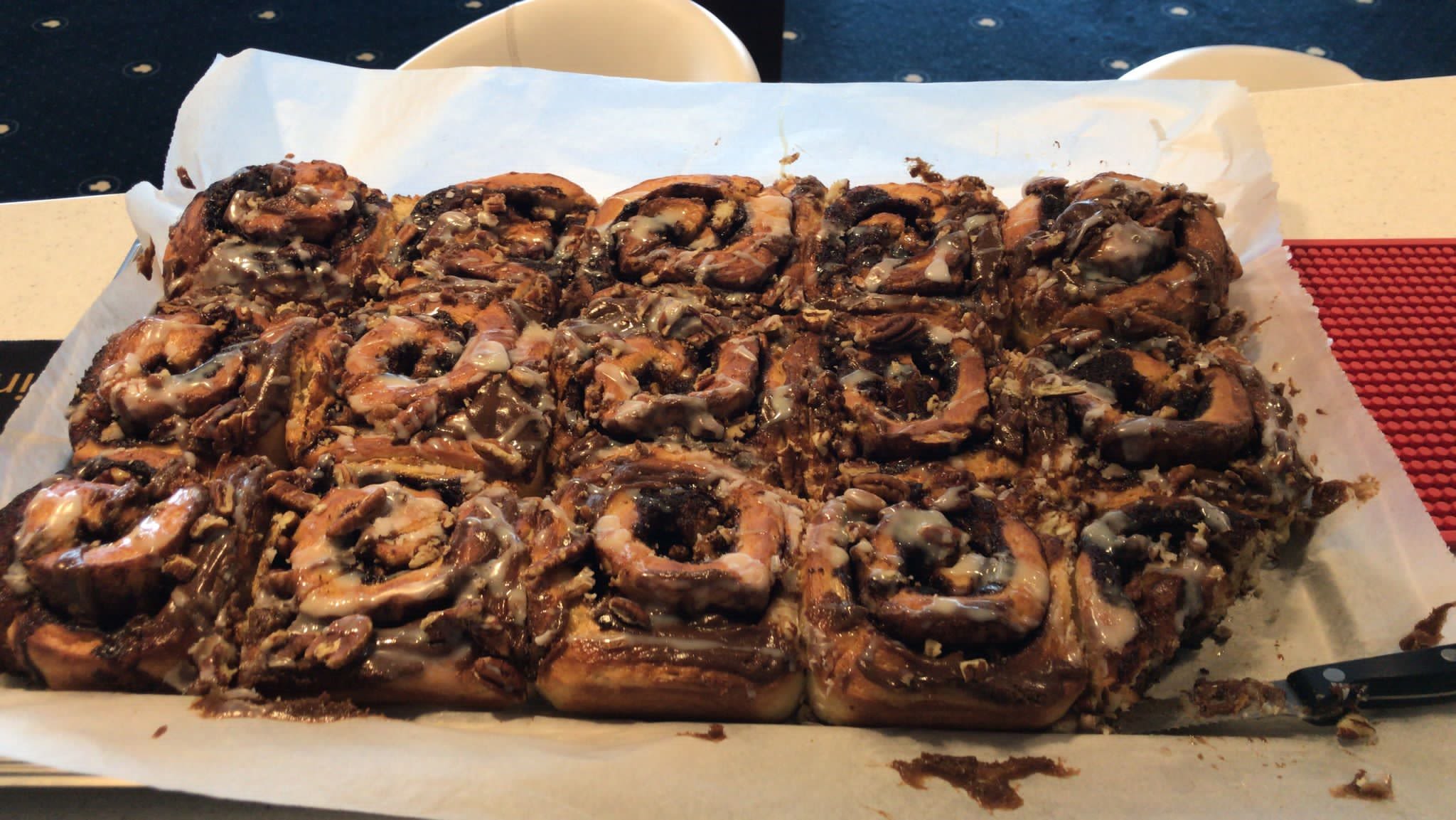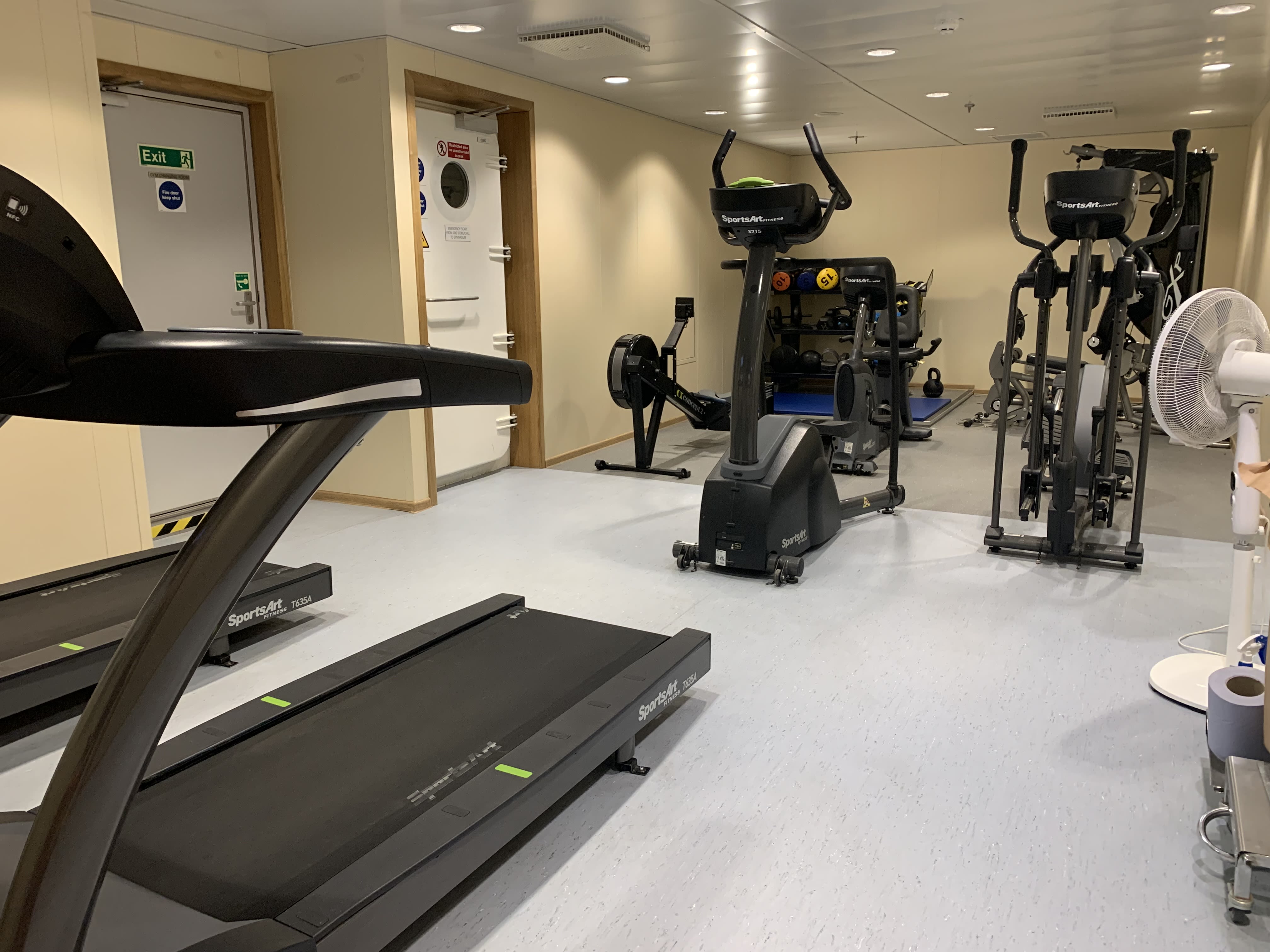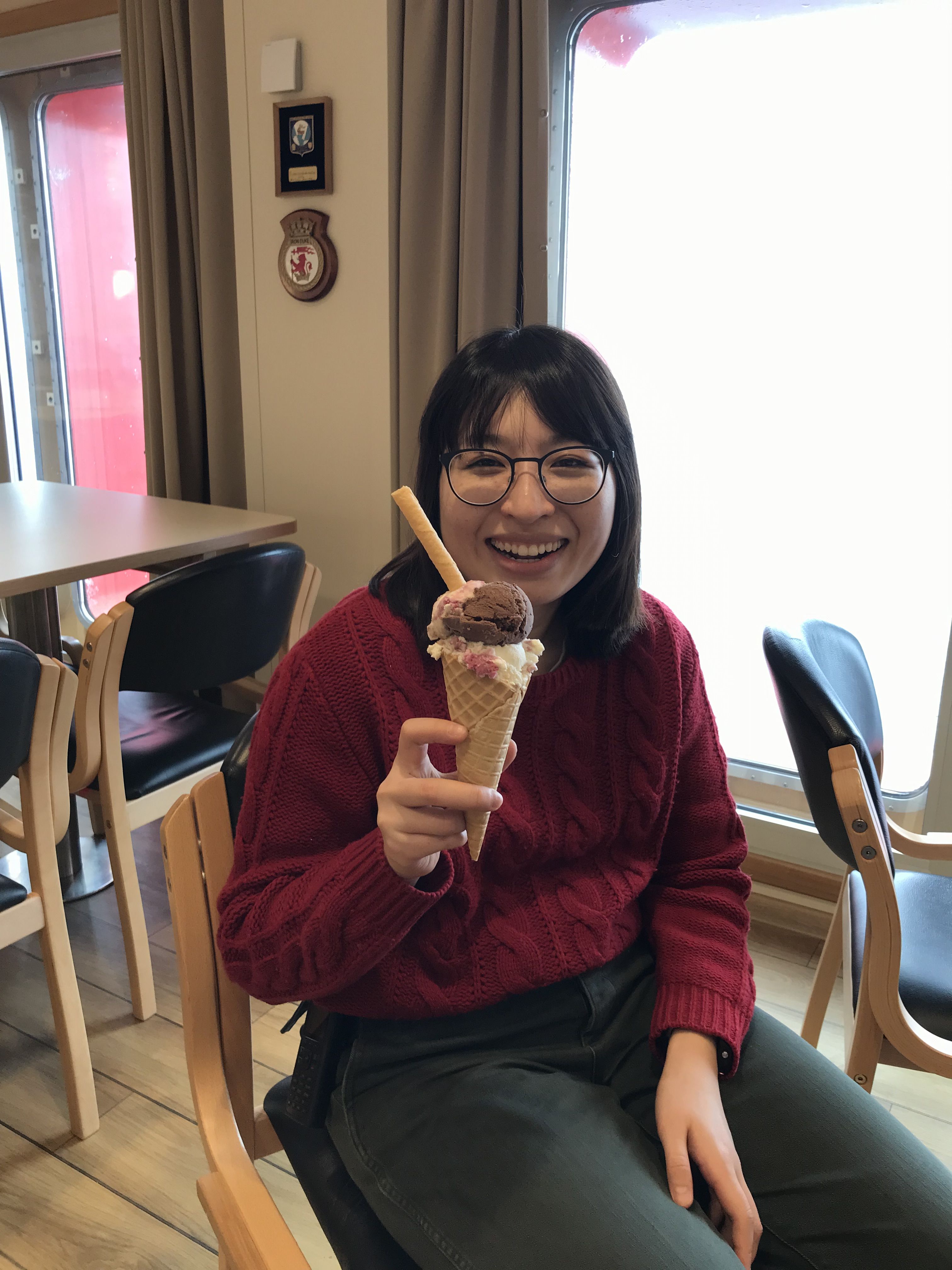PICCOLO: Unlocking the Antarctic's Carbon Secrets
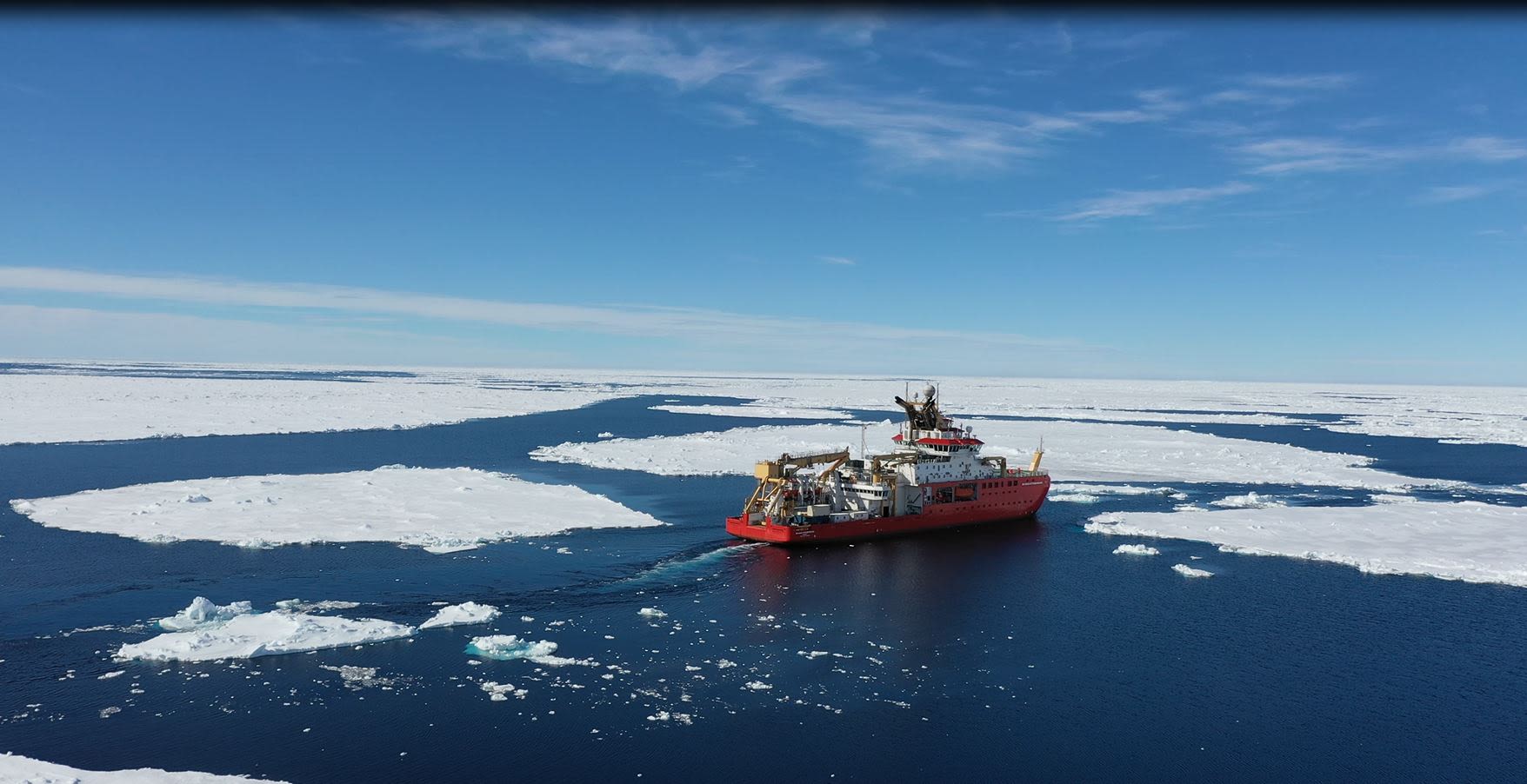
Led by UEA's Prof Karen Heywood, a team of scientists embarked on an expedition to the Antarctic to investigate how carbon dioxide moves and transforms in the Southern Ocean.
Read about the team's journey.
Over the course of the 52 day PICCOLO cruise (Processes Influencing Carbon Cycling: Observations of the Lower limb of the Antarctic Overturning), they highlighted life aboard the ship, the challenges and joys of working in such an extreme environment and, most importantly, the impactful research being undertaken.
The project was part of the NERC (Natural Environment Research Council)-funded RoSES (Role of the Southern Ocean in the Earth System) programme, and led by the University of East Anglia (UEA) and the Plymouth Marine Laboratory (PML), alongside the British Antarctic Survey (BAS) (which operates the RRS Sir David Attenborough), the University of Plymouth, the University of Leeds, and the University of St Andrews. Their findings will be used to inform decisions on international climate change policy.
The scientists on board hoped to learn more about the biological, chemical and physical processes that draw carbon deep into the Southern Ocean.
The seawater at the surface near Antarctica interacts with the atmosphere, absorbing carbon and losing heat. The carbon in this water is then altered by the miniature ocean plants and plankton, before descending to the ocean depths, carrying the carbon with it. By understanding more about this process, the researchers can improve models that make predictions about our future climate. They made use of the latest technologies, such as ocean gliders and floats, to observe these processes in places that were previously inaccessible and unstudied, like under the sea ice.
The team also drilled holes in the sea ice to collect samples, and tagged seals with instruments which continuously collect data about the ocean as they dive up and down through the water. The data is sent back to scientists in real-time via satellite communication.
The observations and data from this project were fed into earth system models, to help make more accurate climate predictions.
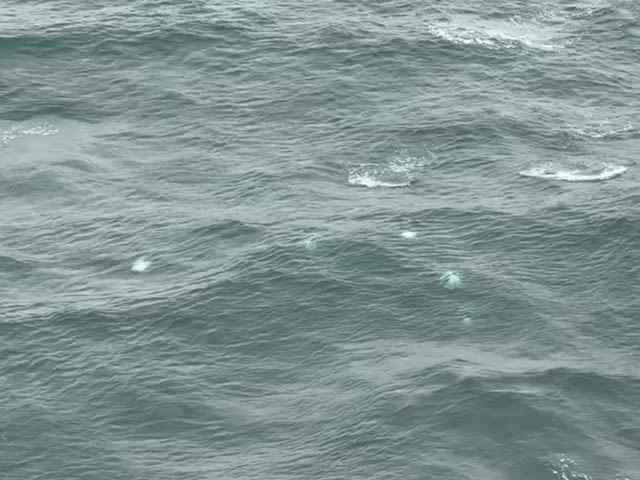
PICCOLO: taking stock
20 March 2024
Karen Heywood (UEA), Tom Bell (PML) and Katrin Schmidt (University of Plymouth)
So, now that the dust has settled, and most of the team have arrived back in the UK, it’s time to take stock and see what we achieved during the PICCOLO field campaign:
- Distance travelled: 5650 nautical miles, southernmost latitude 67.59°S
- 141 profiles of ocean properties obtained from the ship, covering a vertical distance of 245 km! That’s equivalent to Norwich to Birmingham.
- 7500 water samples collected for analysis
- 10,230 litres of seawater filtered for biogeochemistry
- 24,700 litres of seawater sampled for trace metals and isotopes
- Six glider deployments, 434 glider dives of data
- 19 seals tagged (241 profiles and counting…..)
- Two mooring recoveries and one redeployment
- Six floating sediment trap deployments
- 44 nets to collect zooplankton and krill
- One Argo float deployed (eight profiles and counting….)
- 37 optics rig deployments
- One autonomous surface vehicle deployed and recovered carrying ten sensors
- Two days of intensive on-sea-ice campaigns
- 40 drone flights
- Maximum roll only 9.66°; fastest speed over ground 18.6 knots
- -8.5℃ lowest air temperature experienced
"SDA had her maiden voyage to Antarctica in 2021, yet the PICCOLO research cruise was the first real test."
In addition to the numbers (we scientists do love our stats!), now is also a time to reflect on the practical and human elements that have made our research campaign so successful. The Royal Research Ship Sir David Attenborough (or SDA for short) is considered one of the most advanced polar research vessels in the world. SDA had her maiden voyage to Antarctica in 2021, yet the PICCOLO research cruise was the first real test. She passed, and we successfully made extensive use of her various capabilities (see the previous blogs!).
A successful research cruise requires more than modern equipment though – it requires expertise to run, fix and support the science needs associated with that equipment. The support provided by BAS during PICCOLO has made a big difference to the outcomes of the cruise. This has come in many forms, either through practical support of the multiple gear deployments we made every day, or by the just-as-critical IT and data support that enabled well-informed decision making. Similarly, the unwavering enthusiasm and positive attitude displayed by those helping us to communicate between science and ship (before and during the cruise!) helped us to plan effectively and make reasonable demands of the ship and her crew.
We are indebted to the ship’s captain and company. There was a very good atmosphere on board among crew and scientists alike, and this was a direct consequence of the leadership and approach taken by all aboard. What a privilege the PICCOLO cruise has been, and this privilege can only spur us on to start looking at the mountains of data that have been generated! When asked about the good atmosphere onboard, everybody mentions the captain, but he just laughs and says ‘… it’s because we all enjoy being in Antarctica’.
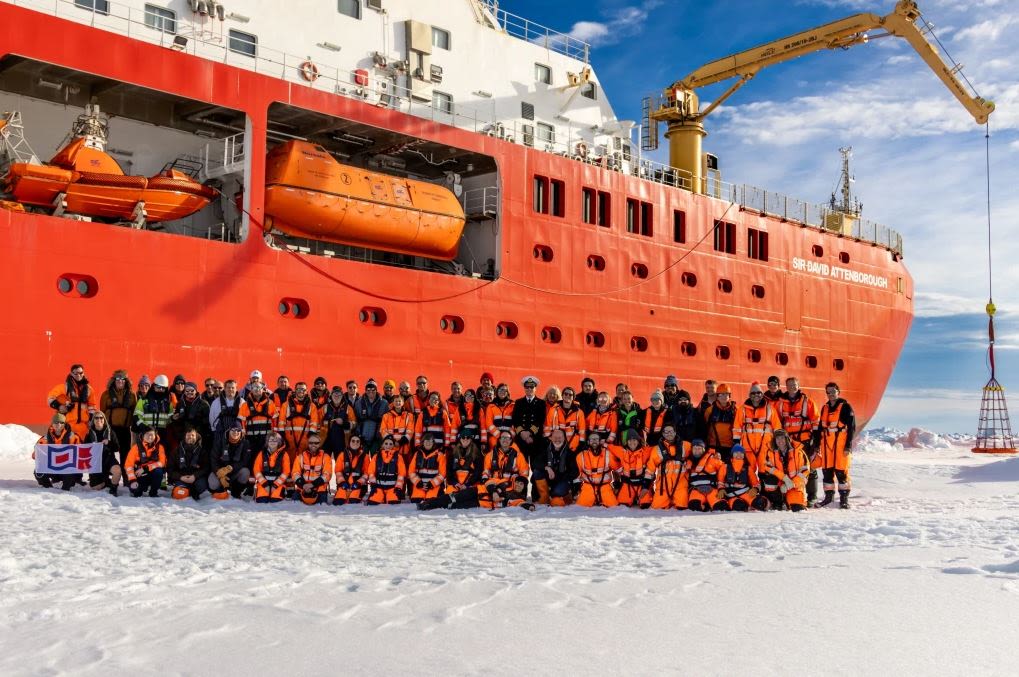
The PICCOLO scientists and the RRS Sir David Attenborough crew. Credit: Lewis Bumstead.
The PICCOLO scientists and the RRS Sir David Attenborough crew. Credit: Lewis Bumstead.
Old friends, new friends
15 March 2024
After almost two months, beginning in mid-January 2024, the PICCOLO research cruise returned to Chile. Here, some members of the team share their thoughts on the expedition.
15 March 2024 - Prof Karen Heywood
The PICCOLO field campaign was more successful than we ever dared to hope. We were delighted to achieve all our objectives. It was exhausting, but exhilarating. On such a voyage, everyone works seven days a week for two months, many people on 12 hour shifts, so everyone deserves some time to relax now. But we’re excited to begin looking at the data together in the coming weeks and months, and we're already planning a workshop for September.
The UK’s new polar research ship is an excellent platform for multidisciplinary science. When we sailed back into port in Punta Arenas, we were thrilled to see the UK’s old polar ship, the Noosfera (formerly the RRS James Clark Ross, now owned by the Ukrainian Antarctic programme) alongside us in the dock. We were invited to look round. Many of us have sailed on that ship many times, and felt quite nostalgic about the old ship - but we came back thinking that the new ship is so much better, with more and better laboratories and enhanced scientific facilities. Old friend, new friend.
"You can have the best facilities in the world, but what makes a field campaign successful is the team of people."
Best of all were the team of people onboard. You can have the best facilities in the world, but what makes a field campaign successful is the team of people. Our PICCOLO science team was enthusiastic, friendly, and always good humoured. There were no complaints from anyone, even when we were asking people to work overnight or to omit their own instrument from an upcoming deployment. Everyone was positive and happy to help others. Furthermore the atmosphere onboard was excellent, and all the officers and crew were helpful, interested and cheerful day and night.
On a personal level, I’ve been glad to get home, and to meet my grandson for the first time!
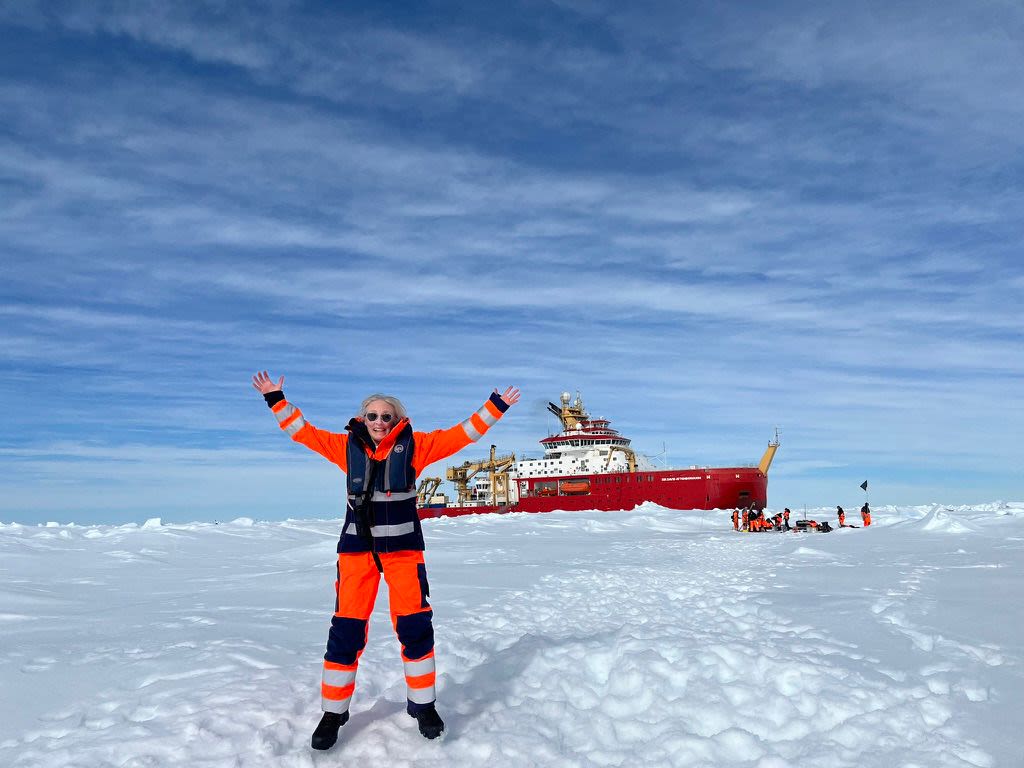
"Actually walking off the ship onto the sea ice was an amazing feeling. Just to think that there was 400 metres of sea beneath our feet. The ice felt very solid though, with slushy snow on top. Here I am jumping for joy!" Credit: Natalia Osma.
"Actually walking off the ship onto the sea ice was an amazing feeling. Just to think that there was 400 metres of sea beneath our feet. The ice felt very solid though, with slushy snow on top. Here I am jumping for joy!" Credit: Natalia Osma.
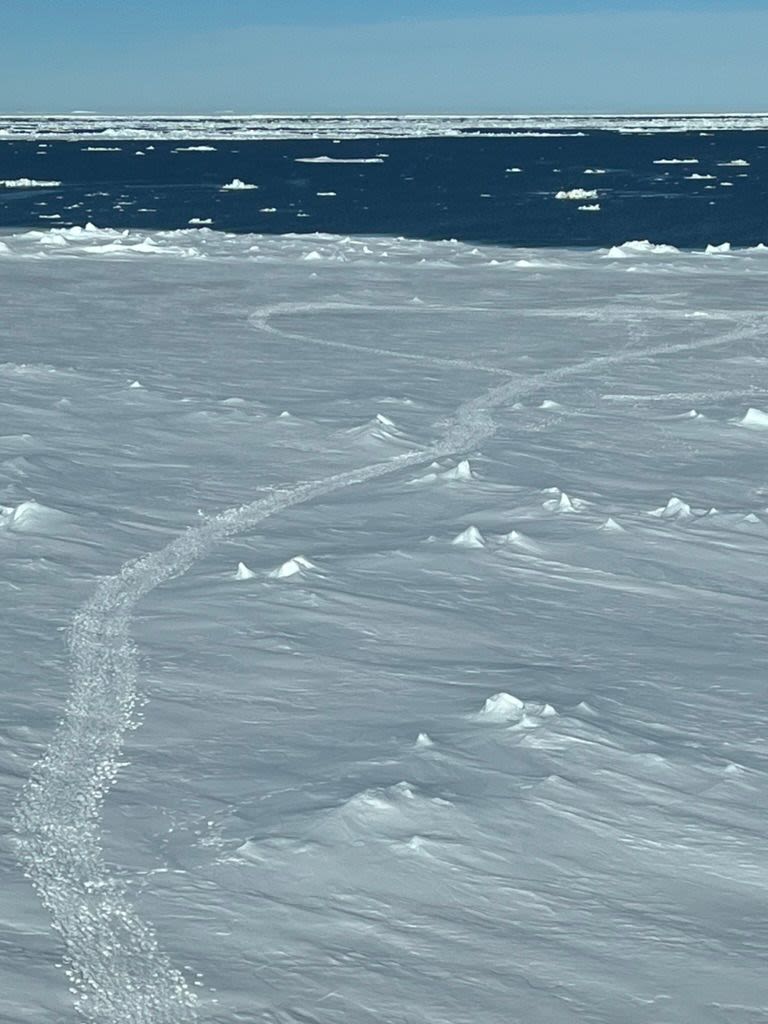
"My favourite photo - the end of a long day on the sea ice when everything is put away back on the ship - footprints in the snow, showing the pathways we trod between our different sampling sites." Credit: Karen Heywood.
"My favourite photo - the end of a long day on the sea ice when everything is put away back on the ship - footprints in the snow, showing the pathways we trod between our different sampling sites." Credit: Karen Heywood.
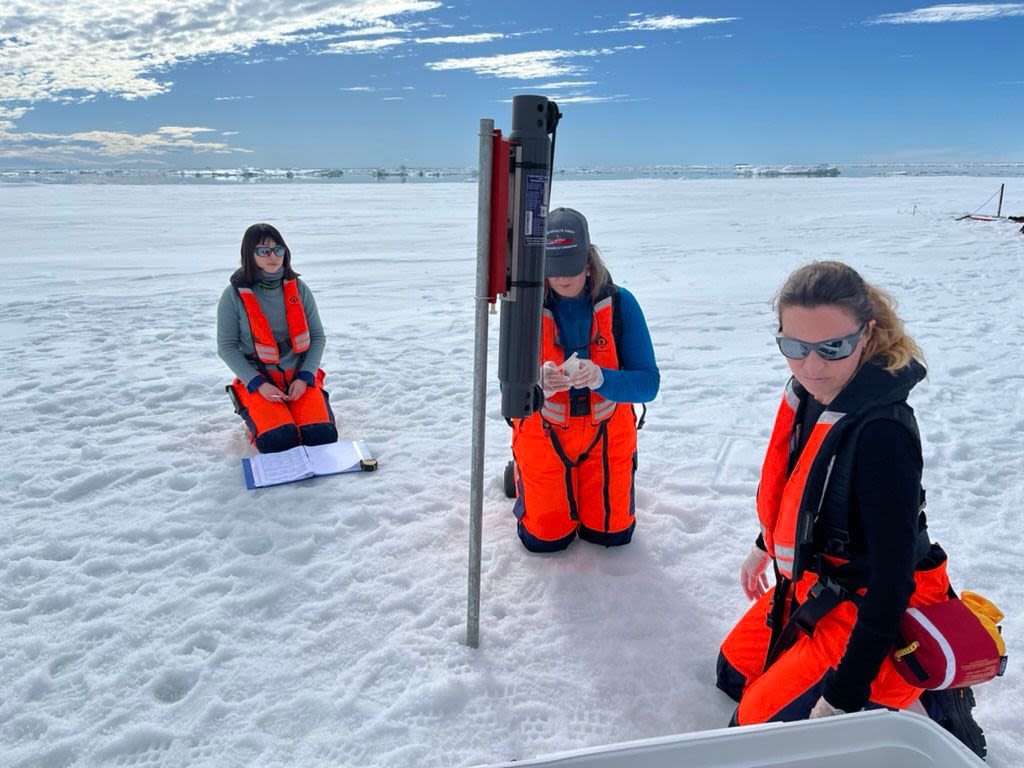
UEA’s Yixi Zheng (official recorder of all samples), Carol Robinson and Isabel Seguro collecting water samples from a bottle that has been lowered through a hole in the sea ice. (Credit: Karen Heywood).
UEA’s Yixi Zheng (official recorder of all samples), Carol Robinson and Isabel Seguro collecting water samples from a bottle that has been lowered through a hole in the sea ice. (Credit: Karen Heywood).
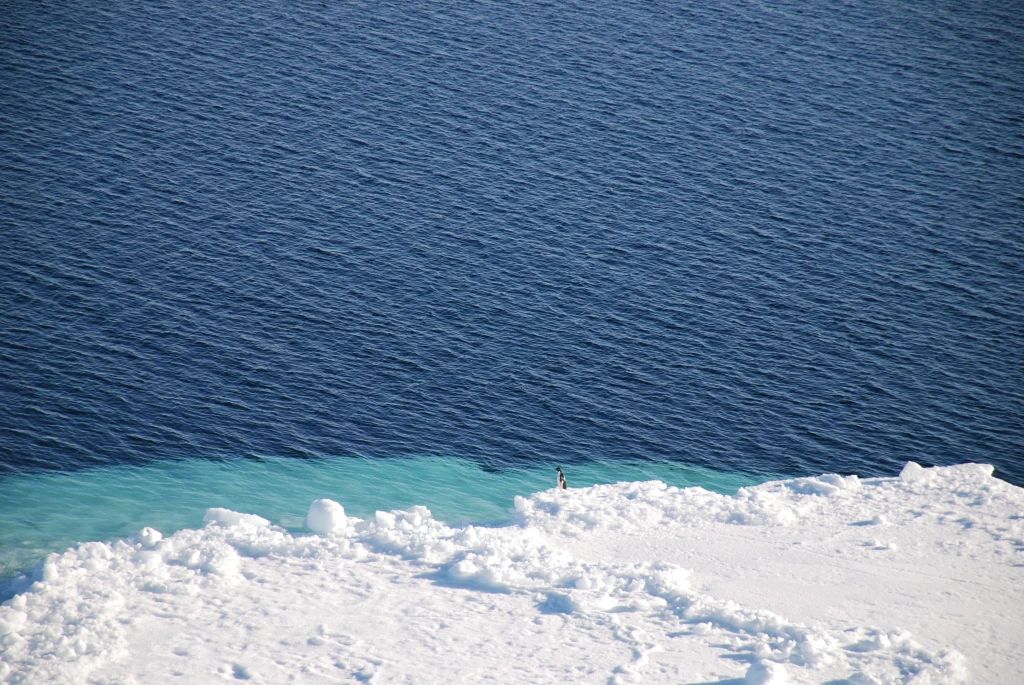
Credit: Elise Droste (Alfred Wegener Institute)
Credit: Elise Droste (Alfred Wegener Institute)
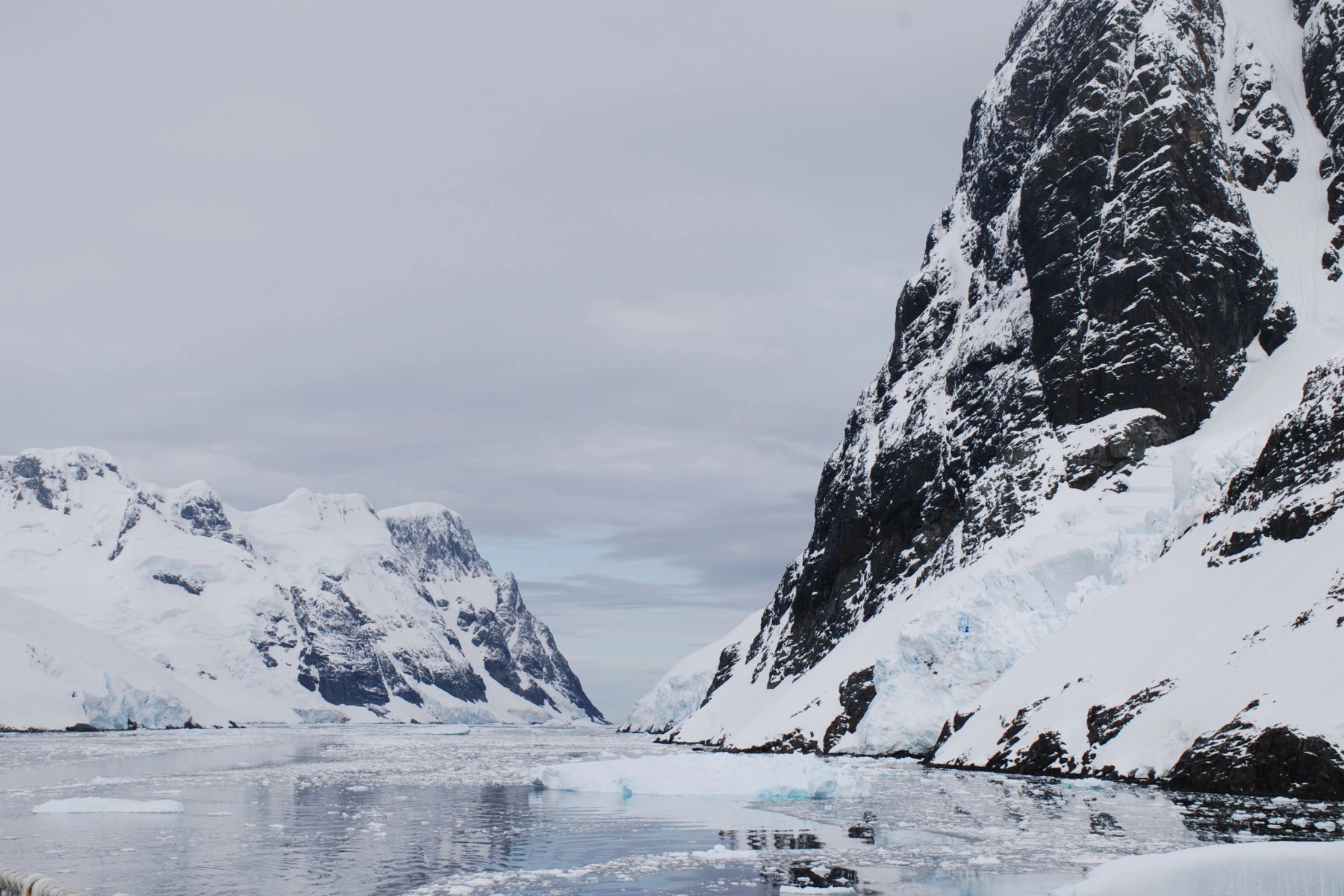
Credit: Elise Droste (Alfred Wegener Institute)
Credit: Elise Droste (Alfred Wegener Institute)
Embracing uncertainty
9 March - Elise Droste (Alfred Wegener Institute)
A ship is its own little cosmos. It is isolated, has its own routine, and resources are limited. Then we put a bunch of enthusiastic scientists on board with an ambitious mission, and send them to Antarctica, one of the most remote and extreme places on Earth. What could possibly go wrong?
PICCOLO has scientific objectives to fulfill, and each scientist will have additional smaller ones. Opportunities to steam to the Southern Ocean and to do research around Antarctica don’t come around every day. It could be a once in a lifetime experience. We leave families behind for months to sample seawater. We put our lives back home on hold to be here. Driven by curiosity and wonder for the natural world, we choose to be on this ship and are grateful for it, but of course, there is a pressure to come back with lots of data. Good data.
"It rapidly becomes clear that our circle of influence ... is very small in this place. It is dwarfed by the waves, the weather, the ice"
We’ve brought with us hopes and expectations for what we want to achieve. Sharing these with each other fuels the excitement and increases the ambition. However, from the moment the ship left port in Punta Arenas, all the promises we made in proposals and plans were placed into Poseidon’s hands. It rapidly becomes clear that our circle of influence, the things we have direct control over, is very small in this place. It is dwarfed by the waves, the weather, the ice, but also limited by (un)available resources on board, and people’s energy to keep going despite constant change.
What was true an hour ago, might not be true now. The plan we made only works if the sea ice cover doesn’t change too much, but the winds and currents don’t care. The plan was to go south and then north, but a storm forces us to first go north and then south. And even when everything is going swimmingly, that’s when your analysis instrument in the lab decides to misbehave and screams for hours of troubleshooting. Say goodbye to that one hour of social time you were looking forward to.
There is some irony in struggling with uncertainty as a scientist, seeing as science revolves around uncertainty and the unknown. We speak its language, understand its implications, and accept its presence, but when it comes to our own lives, how well do we really deal with it?
"People on board are in constant adaptation mode."
It’s human nature to avoid change and uncertainty. It can be stressful and unwanted. When we find ourselves on a (very sophisticated) floating piece of steel in the middle of the ocean and plans tend to change from hour to hour, we want to find a way to navigate that constant change. People on board are in constant adaptation mode. It’s a given, flexibility is key, and we soon find that creativity becomes an extremely helpful – or even necessary – skill to have.
When change is sudden and threatens work into which we’ve already invested many hours of our time, it can be painful and difficult to accept. However, the more extreme the situation, the more we are forced to see it from a larger perspective. A medivac caused us to literally instantly drop our preparations to jump onto an ice floe found half an hour previously, and strap all equipment down to steam to the other side of the Antarctic Peninsula. Within minutes, emotions leapt from almost child-like excitement with the prospect of stepping onto the Antarctic ice, accompanied by some pressure to get all the preparations done in time and the anticipation of something new and epic, into a void where there was only concern for the patient and uncertainty as to what was going to happen next.
The shift in gear in the attitude and atmosphere on board was just as swift as the shift in gear of the ship’s engines to steam full speed to the nearest base. The most important thing was to take care of each other. Science could wait. We would make a new plan soon.
In this case, the highest priority was crystal clear and easy to accept. In other, perhaps less dramatic scenarios, priorities can be more challenging to identify, and different perspectives are harder to see. But without fail, the people on board manage to do so anyway. They see change as opportunity. With it comes the attitude to make the best of the given situation. We can’t change the circumstances, but what can we do with the little things that we do have control over?
I identify this resilient attitude with life and science on board, because this is where I’ve been hyper-aware of it being put into action. Certain challenges feel intensified on a ship. We don’t have the usual people in our lives around us who we can turn and rant to about our struggles, we can’t extract ourselves from our surroundings to get away from it all, and we certainly cannot let off steam in the pub.
But the more I think about it, the more I wonder whether these challenges are any different from the ones back on land. Do we find it easier to deal with the ones on board only because we feel like we don’t have a choice? Maybe none of it is easy at all, but we are just willing to embrace uncertainty more in some situations than in others. It is then a nice reminder that if we can embrace the uncertainties when in unpredictable seas and ice, perhaps we can embrace the uncertainties of our lives on land a bit tighter, too.
The dangerous life of ocean gliders
8 March 2024
7 March - Prof Karen Heywood
We must have discovered a new force of nature – the attraction between ocean gliders and ice! When we are piloting our gliders, we typically rely on satellite imagery to tell us how much ice is in the region. However, what the ice looks like on the satellite images is sometimes quite different to what it looks like on the ground – or on the water I should say.
Ice – whether sea ice (frozen seawater) or icebergs (bits of glacier from the land) – is hard. Rock hard. It moves with the waves and the currents. It doesn’t take any prisoners. Gliders are small (about as big as a person), and they have delicate antennas, sensors, wings and rudders. Every few hours, when the glider comes to the surface to communicate with the pilots back in the UK, sending back data and receiving instructions, the glider is at the mercy of the ice. Our gliders are quite smart – if they come up underneath ice, they try to call home a few times, and if they don’t get a signal (just like your mobile phone when you’re out in the wilds), they go back down and carry on with their mission. We don’t panic if we don’t hear from the glider for a few dives – we know it’s probably under the ice and will come back eventually. We cross our fingers and hope…
When we want to recover the gliders back to the ship, however, we have to get the glider to the surface. That’s the most risky part of the glider’s mission. Our glider pilots liaised closely with us, aiming to have the glider at the surface as we arrived on the ship to pick it up. Arrive too late, and the ship wastes valuable time waiting for the glider to surface. Arrive too soon, and the glider is in a vulnerable spot for longer.
Two of our gliders communicated regularly every few hours, every time they surfaced – until the very moment when they were told to come to the surface for recovery. The ship arrives to collect them, but there are no calls from the gliders. I’m on the bridge coordinating the recovery, reporting on the gliders’ locations. There are large sea ice floes around the ship. The chance of the glider coming up underneath one is low, as there is mostly open water around us, but we know what gliders are like. “The gliders should be calling any minute,” I say confidently to the Captain, “they’re due at the surface now”. A few more long minutes go by. No calls on my computer. “Probably, the gliders came up under one of those ice floes and have gone down for another dive, they’ll be another 20 minutes or so,” I tell Will, the ship’s Captain. We go quiet. Minutes tick by. We make a cup of tea. Then, suddenly, both gliders start calling at once – they’re both at the surface! “Just like buses,” comments one of the pilots back at UEA in our group chat. The glider GPS locations appear on my computer and I relay these to the Captain – we set off to lift the gliders out of the water and onto the ship. Another glider encounter with ice has ended well!
One of our gliders surfaced beautifully, on time, and was easily spotted not far from the ship ready for us to collect. But then it began to drift towards a large nearby iceberg, as if drawn by an invisible force of attraction. We held our breath. The ship’s turbulent wake pushed the glider further towards the iceberg as we inched nearer to it. Then the glider went beneath the overhanging side of the iceberg. It looked very vulnerable and small in comparison with the huge iceberg. “Don’t worry,” Captain Will said calmly, “we’ll just wait until it pops out at the other end.” And so we watched for a few minutes as it bobbed along past the iceberg and made its way into the open water. There we safely recovered it, and breathed a big sigh of relief.
"It was heart-breaking to have been so close to getting it back safely on board after its multi-month mission, only for it to get crushed on its last day."
Sometimes things don’t end so positively. Another glider had been profiling away in relatively open water. We approached during the night, located the glider, and waited for daybreak. On approaching the glider, we found that it had drifted into a patch of broken up iceberg – technically called bergy bits. What is the chance that a glider will find its way into the only bit of ice for miles around? Well you know what those pesky gliders are like…. The bits of ice were moving up and down with the swell, and the poor little glider was being bashed between big lumps of ice. It would have been too dangerous to deploy a small boat to try to extricate the glider. As we tried to manoeuvre the ship in to get it, the glider became more difficult to see, disappearing for a few seconds, and then it was gone for good. We kept hoping it would reappear outside the patch of ice, but it didn’t. It was heart-breaking to have been so close to getting it back safely on board after its multi-month mission, only for it to get crushed on its last day. Thankfully, gliders send their data back throughout their missions, so their scientific work is done.
In ocean science, we risk losing our instruments every time we put them into the ocean – perhaps from bad weather, waves or strong currents. With gliders, however, we have another hazard to consider – the glider’s unerring affinity with ice in its many forms!
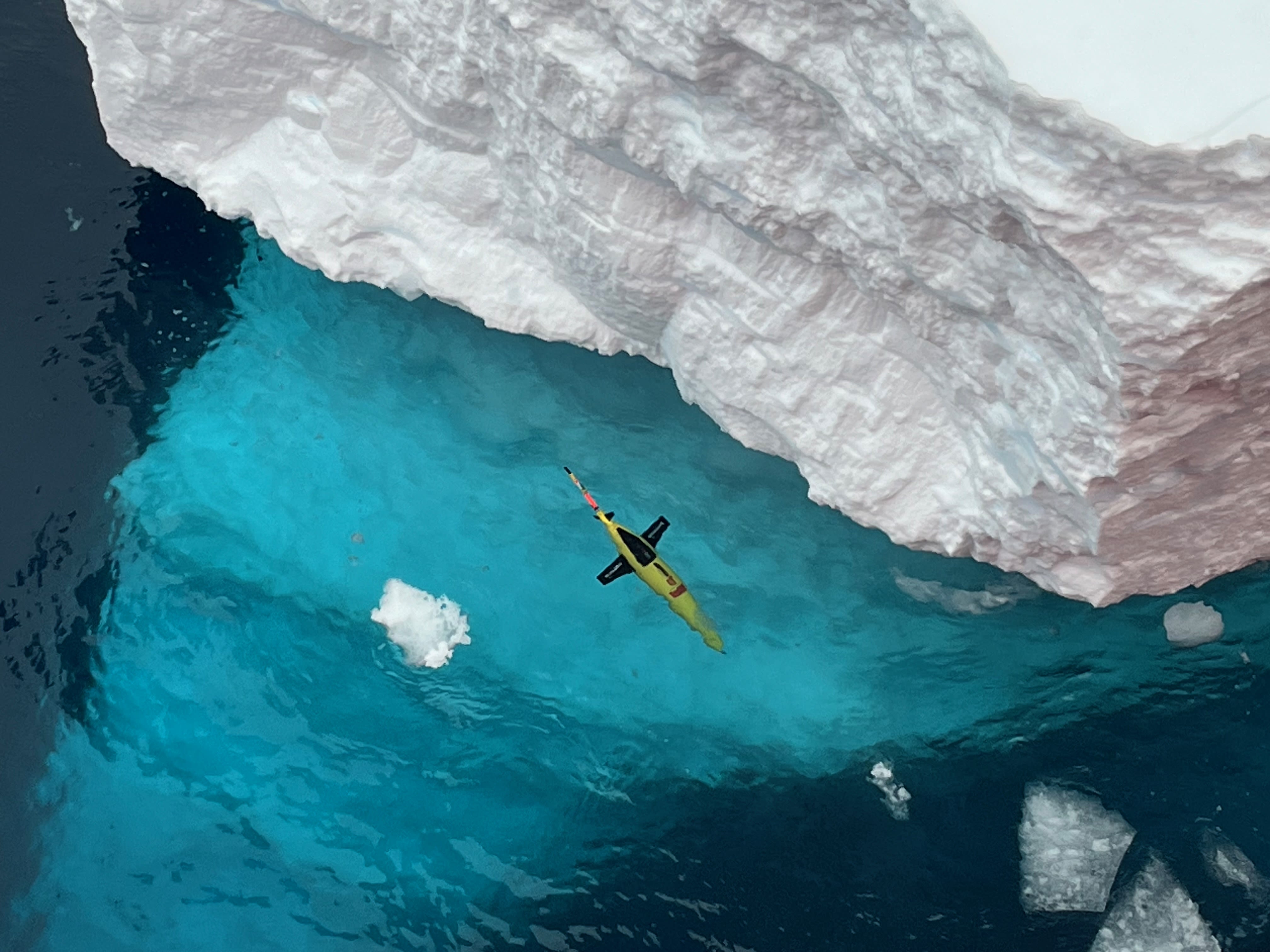
A glider emerges from under an iceberg. Credit: Karen Heywood.
A glider emerges from under an iceberg. Credit: Karen Heywood.
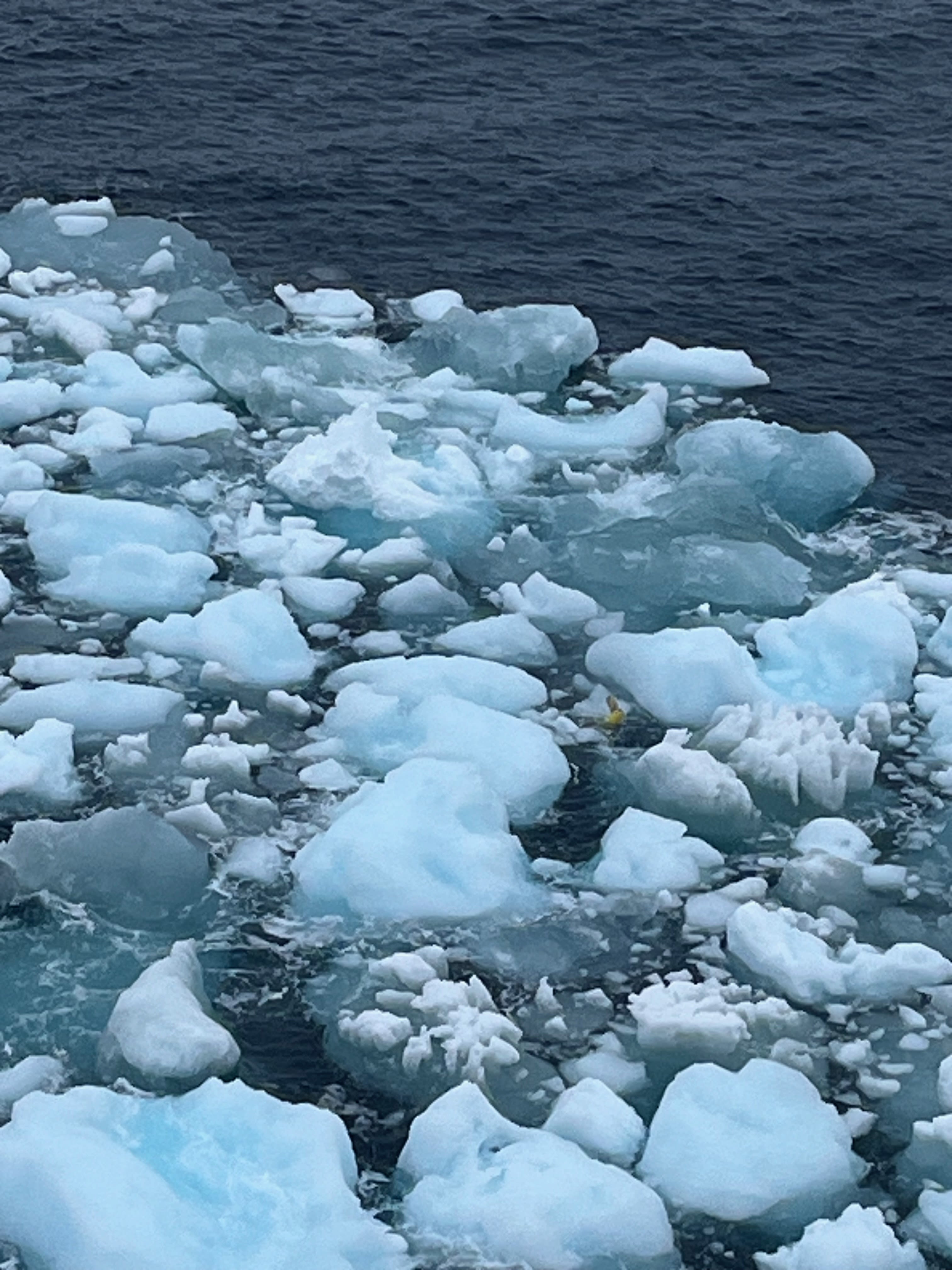
A small glider being pounded by ice. Credit: Karen Heywood.
A small glider being pounded by ice. Credit: Karen Heywood.
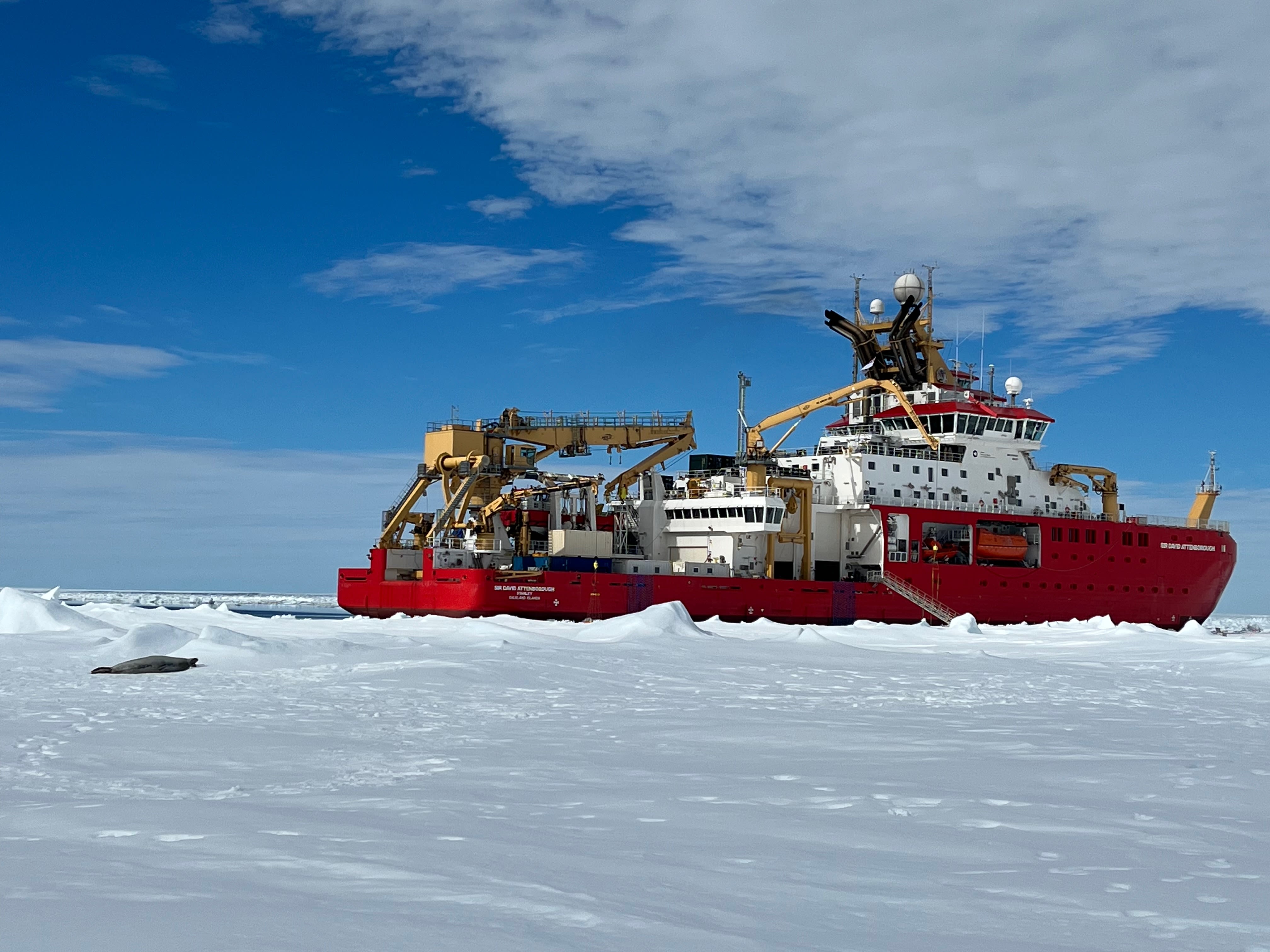
Seal tagging
7 March - Yixi Zheng
The tags we attached to the heads of seals will continue measuring the ocean’s temperature and saltiness after we leave their territory for the UK. Seals will find their way in the Antarctic winter and obtain full water column data that no human being has ever obtained. Three years ago, we published a paper using measurements obtained by seals and reveal, for the first time, the wintertime glacial meltwater pathways in front of Pine Island Glacier, one of the most rapidly melting glaciers in the world. Early this year, we also submitted a manuscript using seal-tag data that captured the summer-autumn upper ocean evolution. We wouldn't have been able to achieve this without seals and the seal tags.
6 March - Lars Boehme (University of St Andrews) and Gui Bortolotto (University of Aberystwyth)
One tool PICCOLO has in its toolbox is a so-called seal tag. The real name is Satellite-Relay-Data-Logger or SRDL. We also have them in different versions on board, some have 'only' a miniature CTD (for temperature, salinity and depth), others also record fluorescence, oxygen or light levels. As the name suggests, these loggers or tags are deployed on seals.
An oceanographic measurement from the SDA can tell us a lot about that one specific location, but what does the ocean in Antarctica look like in the winter, when it is practically impossible for ships to sail in the area, and are our measurements really representative? The tagged seals spread out and provide data from places that we have not visited. The tags stay on until the next yearly moult, so we hope to get data until the end of this year.
Lars Boehme and Gui Bortolotto are the seal scientists onboard. They had to secure multiple permits and go through ethics reviews before they could tag any animals. Tagging these seals serves two purposes: the data collected paints a picture of the oceanographic conditions in the western Weddell Sea, but also records the seal’s behaviour to understand how these charismatic animals live in this harsh environment.
Lars and Gui tagged two Southern Elephant Seals, six Crabeater Seals and 11 Weddell Seals during the PICCOLO cruise. The spread across species helps us to look at the different behaviours of these top predators in this region as they find their own niches in the ecosystem.
What kind of data do we get?
We get two types of data using the tags. We get data which describes the physical environment like temperature, salinity and oxygen, and we get information about how the animals behave, like where they go and how long and deep they dive.
The environmental data can be treated like coming from a ship as we get the information along the seal’s track from the surface of the ocean to the depths they dive to. We can then analyse it and use it in conjunction with all the other data sources we have.
The behavioural data has many different forms. The first information we get are the seal locations. While this seems to be very rudimentary data, it is very important as it can help us to distinguish hotspots for the different species and how they find their own niches or how their living space overlaps.
The future
While the PICCOLO cruise is coming to an end, the data collection will go on. The seals will send us daily updates on where they go and what they are up to. Most importantly, they will provide us with more environmental information about this interesting region of the western Weddell Sea that PICCOLO is so interested in.
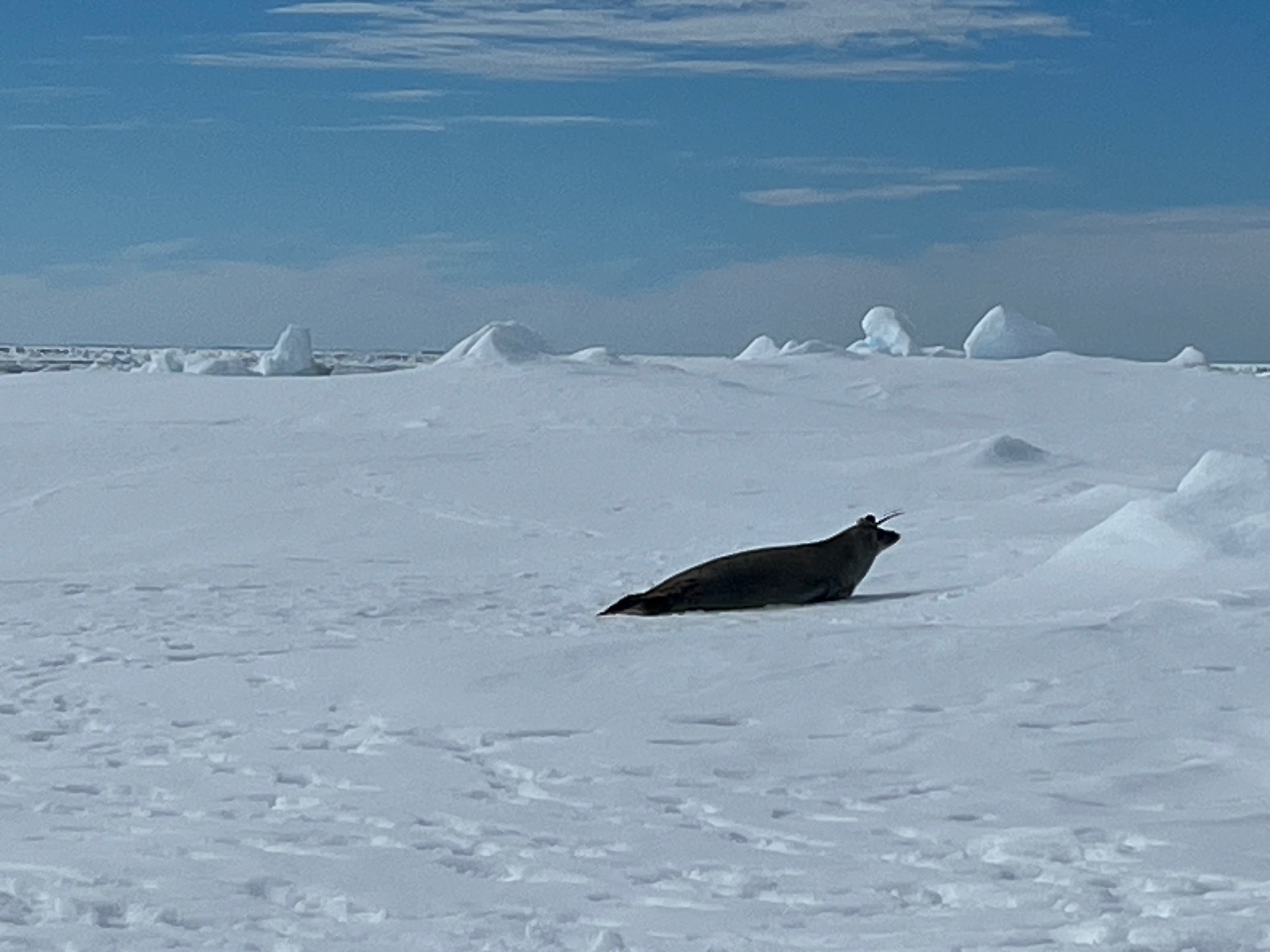
A tagged seal. Credit: Karen Heywood.
A tagged seal. Credit: Karen Heywood.
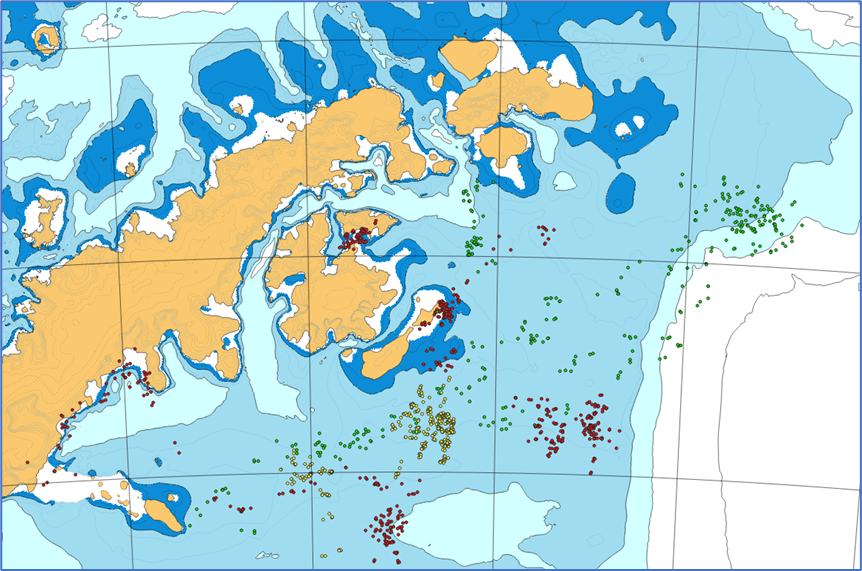
A map of the northeastern side of the Antarctic Peninsula. The dots mark locations from the tagged seals. Weddell Seals are in red, Southern Elephant Seals are in green and Crabeater Seals are in yellow. Map by Lars Boehme.
A map of the northeastern side of the Antarctic Peninsula. The dots mark locations from the tagged seals. Weddell Seals are in red, Southern Elephant Seals are in green and Crabeater Seals are in yellow. Map by Lars Boehme.
The future of ocean science
6 March 2024
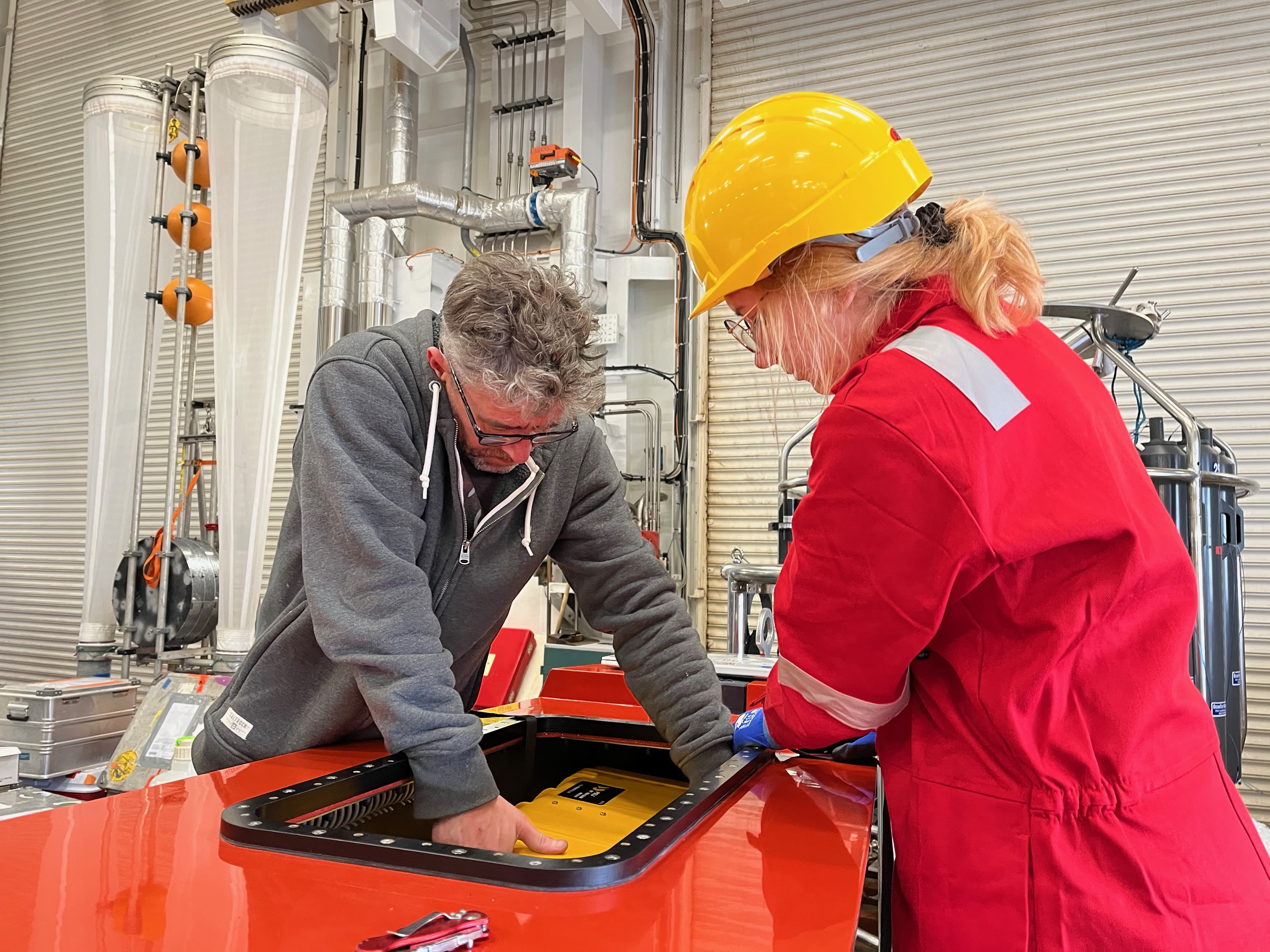
UEA PhD student Beth Siddle and UEA engineer Gareth Lee preparing Caravela on board the ship. Credit: Karen Heywood.
UEA PhD student Beth Siddle and UEA engineer Gareth Lee preparing Caravela on board the ship. Credit: Karen Heywood.
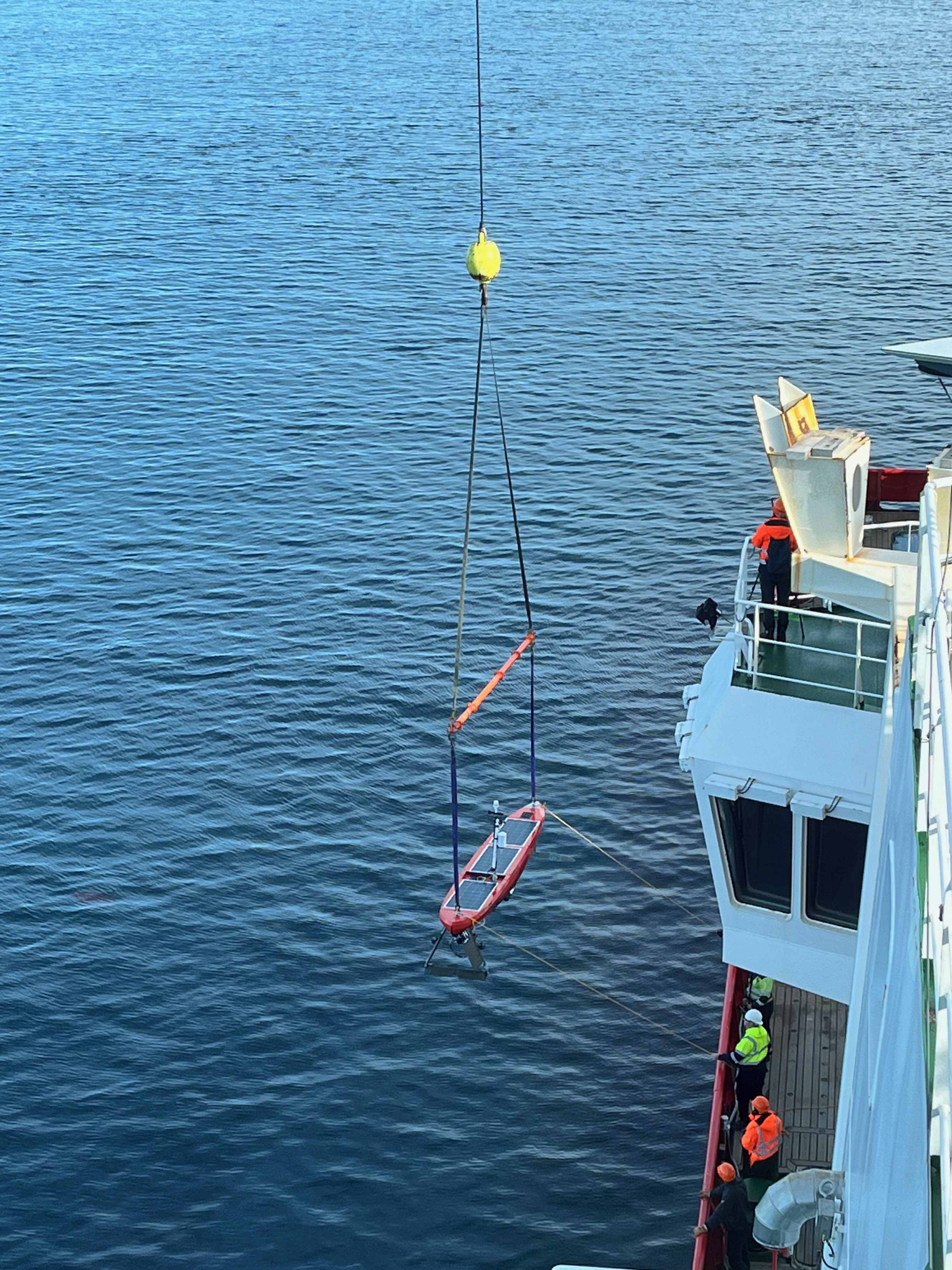
Caravela being deployed from the RRS Sir David Attenborough. Credit: Karen Heywood.
Caravela being deployed from the RRS Sir David Attenborough. Credit: Karen Heywood.
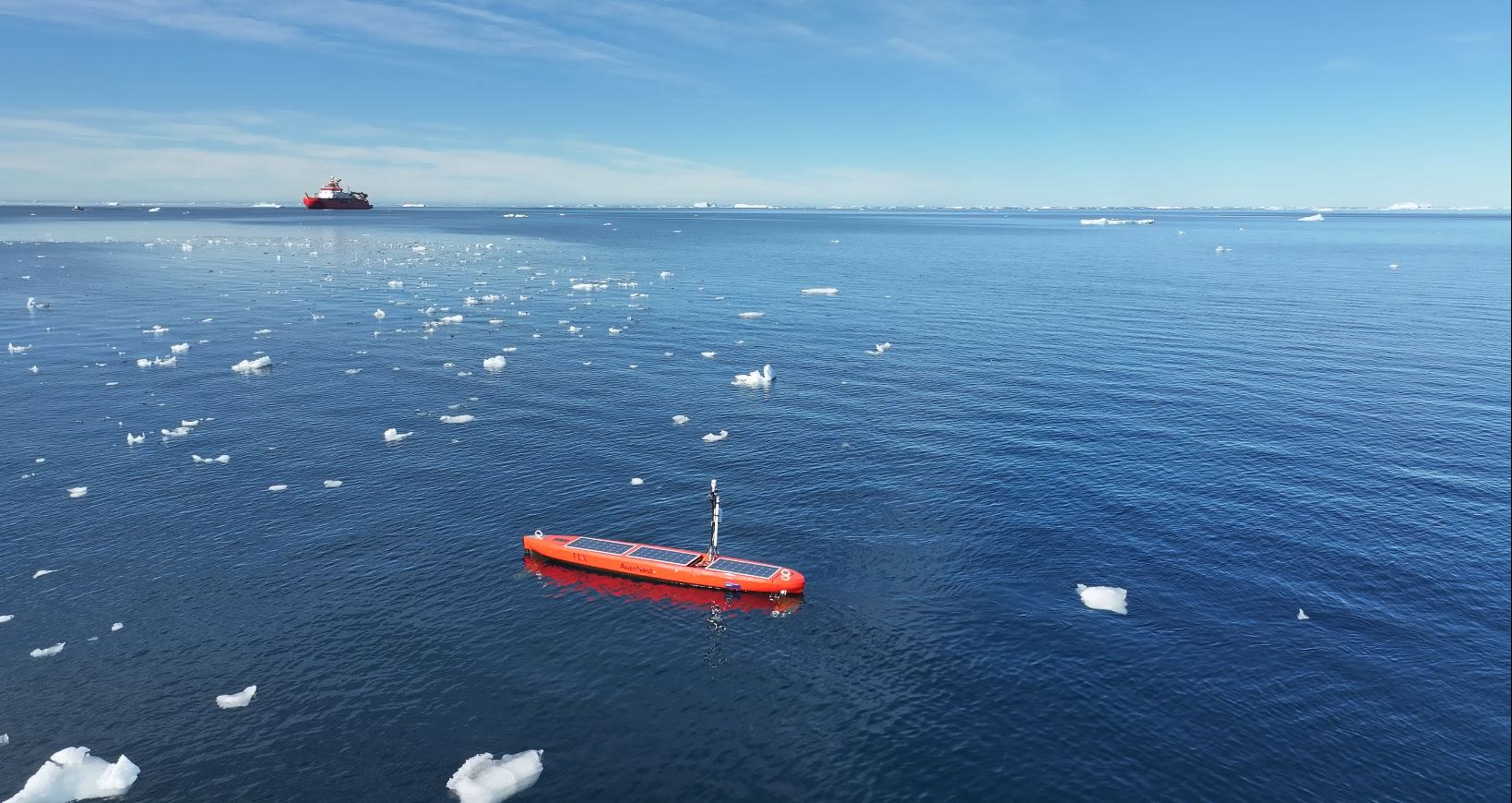
Caravela and the RRS Sir David Attenborough. Credit: Gareth Lee (UEA).
Caravela and the RRS Sir David Attenborough. Credit: Gareth Lee (UEA).
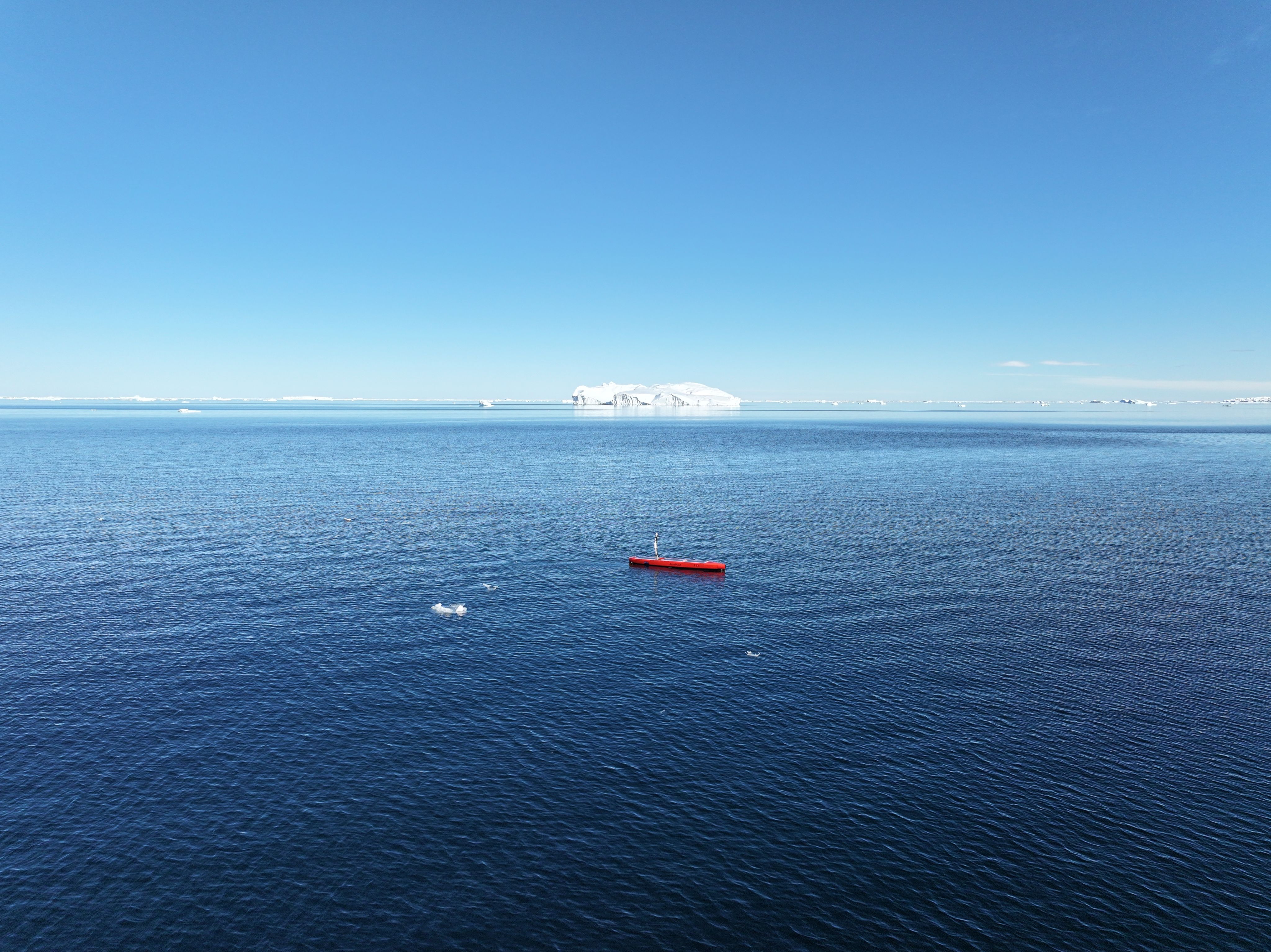
Caravela and a distant iceberg. Credit: Gareth Lee (UEA).
Caravela and a distant iceberg. Credit: Gareth Lee (UEA).
5 March - Prof Karen Heywood (UEA)
One of the last activities of the PICCOLO cruise was what we called a 'supersite' – an intensive study of one location over 24 hours, to study how the ocean varies in small time and space scales. We deployed an ocean glider in one place, and a freely-floating trap nearby to collect the particles of biological matter raining out from the plankton in the surface layer. The ship performed lots of CTDs (conductivity, temperature and depth) – collecting water and measuring biogeochemical and physical properties of the seawater. Excitingly, we also deployed an autonomous surface vessel, UEA’s AutoNaut called Caravela. We have been looking forward to deploying Caravela for the whole cruise, so it was marvellous that we got permission from the Maritime and Coastguard Agency to send her on a mission.
Caravela is powered by waves – she has fins rather like the tail of a dolphin that move up and down with the waves and propel her forward. All of her scientific sensors are powered by solar panels, and she is very quiet; she really is an environmentally-friendly ocean observing system for the twenty-first century. The Captain of the ship, Will, commented during our supersite that this was the most simultaneous science he’d ever seen – three different autonomous platforms out surveying at the same time as the ship was measuring everything it could in the ocean and the atmosphere. Each platform has its own strengths and weaknesses so they complement each other. This is probably what the future of ocean science looks like.
"We think this is the first autonomous surface vessel to be deployed in the Weddell Sea."
Piloting Caravela for the 24 hour deployment was quite a task. Although she is equipped with a collision-avoidance system, this only works for ships that are emitting a signal called AIS (automatic identification system). Of course, icebergs don’t have AIS installed so we had to rely on the ship’s ice radar and the expertise of the officers on the bridge to change the heading of Caravela so she didn’t have too many encounters with icebergs or large sea ice floes. We were really grateful to all the officers for their skill and advice which enabled Caravela to safely complete her first Antarctic mission. We think this is the first autonomous surface vessel to be deployed in the Weddell Sea.
We named our autonomous surface vessel Caravela because it is the Portuguese word for the Portuguese man-of-war, a type of jellyfish that carries a community of organisms beneath it. Caravela was designed to carry an ocean glider, and release it at a selected time. For our Antarctic deployment, we deployed the glider from the ship. We attached a whole host of other sensors to the underside of Caravela for her to carry during her mission. It was a real joint effort with many people onboard contributing a sensor – for pH, dissolved carbon dioxide, chlorophyll and so on. Caravela’s own sensors measure the wind, air temperature and solar radiation, as well as surface temperature, saltiness and currents. Putting all these data sets together is going to be fascinating!
Laurel and Lucy: the carbon chemists' friends
28 February - Gareth Lee (UEA) and Elise Droste (Alfred Wegener Insititute)
Is it odd that scientists anthropomorphise their instruments? When you consider that we spend at least 12 hours a day with them alone in a lab container out on deck, day after day, and they just happen to have quirky behaviours (and we might be a little quirky ourselves), I think it becomes more understandable. In our case, we’re referring to Laurel and Lucy, our two instruments that measure total alkalinity and dissolved inorganic carbon. In scientific manuscripts, we call them by their serious official name: VINDTA, which stands for Versatile Instrument for the Determination of Total inorganic carbon and total Alkalinity.
"Science is supposed to be objective, but the dark art of carbonate chemistry certainly is not."
On board the SDA, we (Gareth and Elise) run these instruments 24/7, each doing 12 hour shifts a day. The first thing we ask each other during our hand-overs is, “How are the girls?” Often, this question seems to be loaded with a little bit of dread and anticipation, because our VINDTAs are a little… how do I put it… temperamental. Plug-and-play instruments? Forget it. They need constant love and attention. Their manuals actually state that to operate them, you have to ‘like’ them. The more we work with them, the more aware we are of their sensitivities. Treating them with patience and gratitude is the way to go. Swearing at them only makes it worse. Yes, science is supposed to be objective, but the dark art of carbonate chemistry certainly is not.
While they’re technically fully automated, except for switching between samples, our ladies are a handful. You can spend 23 ½ hours watching the instruments intensely and the moment you leave them they create a seawater puddle all over the floor. Erratic reproducibility means hours of trouble-shooting. They also like to throw up any of their numerous ‘one-off’ errors when you least expect it and are not watching their every move.
You may think we’re exaggerating. Surely a bunch of valves and switches, driven by a PC cannot be that bad?
You’re wrong.
I mean, look at it. Fifteen pinch valves amidst a metre or two of tubing and two peristaltic pumps channelling water into two pipettes, a titration cell and a stripper to strip the gas out of solution before entering the coulometry cell. It is fraught with errors. Our VINDTAs are antique, and will only work with Windows XP, boggling the mind of our on-board IT support, who asked, “Why do scientists like to work with such old operating systems?!” This was after we asked him to help us install software on the PC from a CD…
"Understanding how the ocean takes up atmospheric CO2, which processes are responsible for this uptake, and where in the water column the CO2 is stored will allow us to understand how the ocean will behave in the future."
Anyway, with the total alkalinity (TA) and dissolved inorganic carbon (DIC) measurements from our instruments, we can determine any of the other marine carbonate system components, including pH and the partial pressure of CO2. During the PICCOLO expedition, we, the UEA CO2 team, are quantifying the DIC and TA in the water column of the Southern Ocean to find out which mechanisms are important in oceanic uptake of atmospheric CO2. We aim to determine how deep in the water column the CO2 is stored and, therefore, for how long it is kept out of the atmosphere. Understanding how the ocean takes up atmospheric CO2, which processes are responsible for this uptake, and where in the water column the CO2 is stored will allow us to understand how the ocean will behave in the future.
Given that we have treated Laurel and Lucy with love during PICCOLO, we have some exciting data that – combined with the other fascinating interdisciplinary datasets collected on board – will allow us to explore processes of the carbon cycle happening in this special part of the ocean.
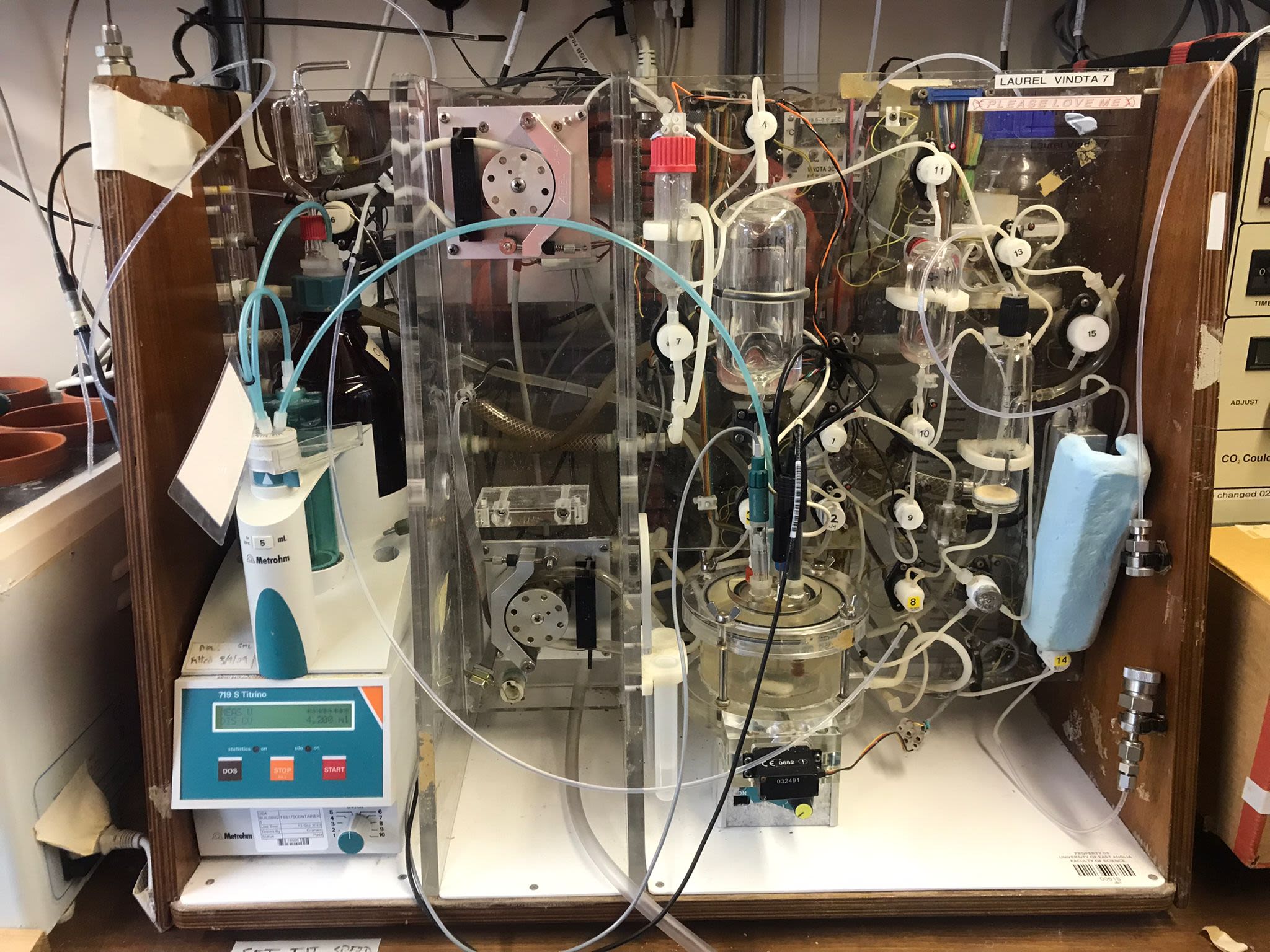
Laurel, a VINDTA, measures total alkalinity and dissolved inorganic carbon. Credit: Elise Droste (Alfred Wegener Insitute).
Laurel, a VINDTA, measures total alkalinity and dissolved inorganic carbon. Credit: Elise Droste (Alfred Wegener Insitute).
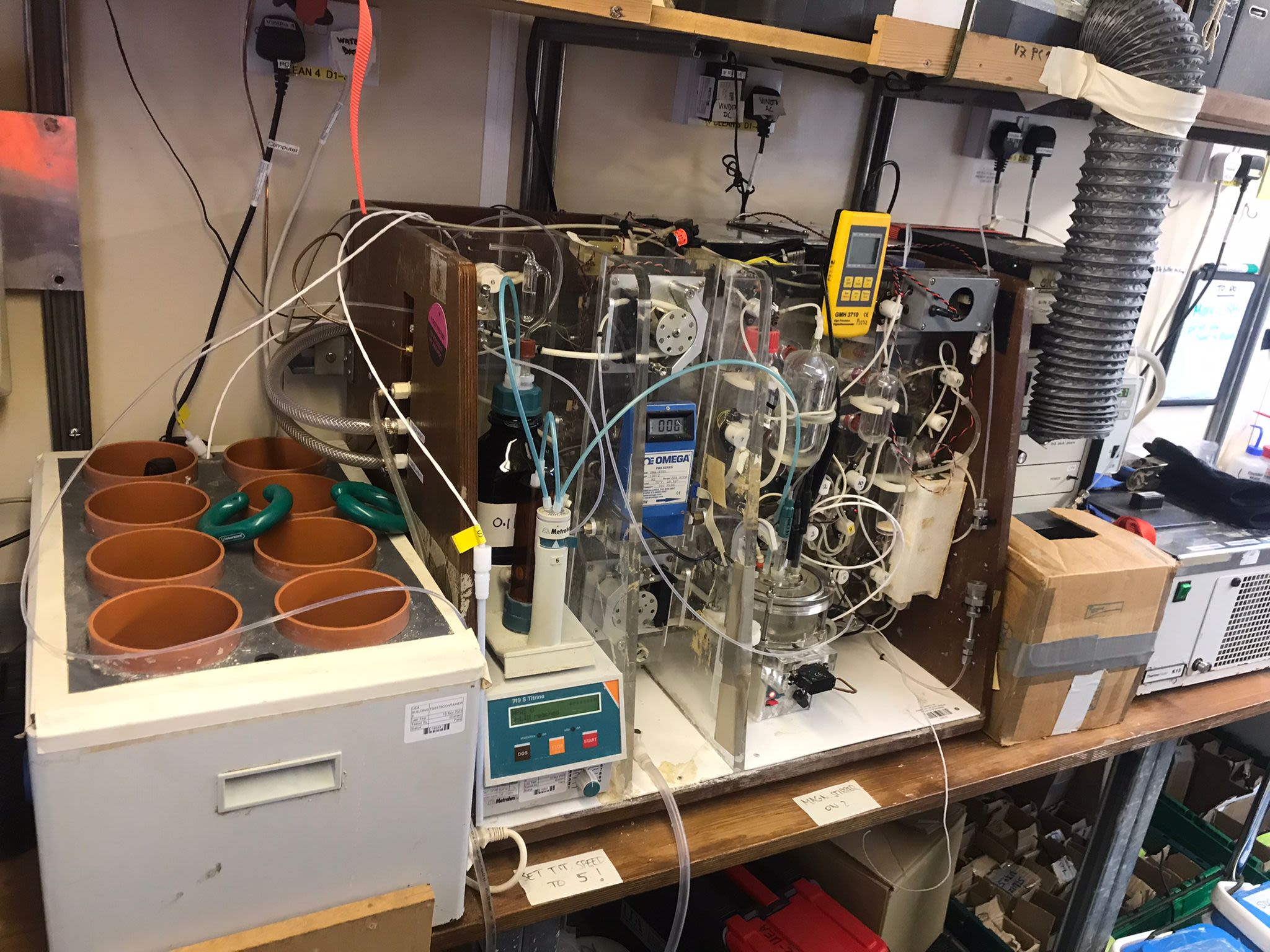
Lucy in the UEA marine carbonates container. Credit: Elise Droste (Alfred Wegener Insitute).
Lucy in the UEA marine carbonates container. Credit: Elise Droste (Alfred Wegener Insitute).
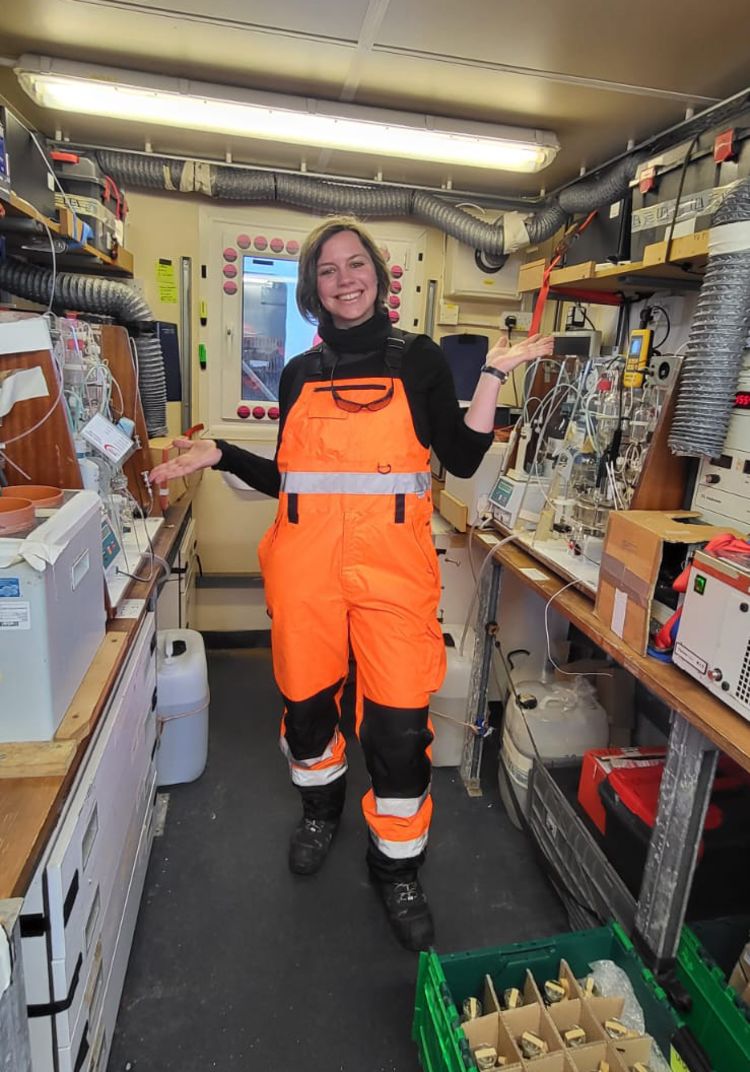
Elise Droste with Laurel and Lucy. Credit: Shaun Miller (BAS)
Elise Droste with Laurel and Lucy. Credit: Shaun Miller (BAS)
Outreach and research
23 February – Isabel Seguro
What do you think researchers are like? Probably, the first image that comes to your mind is someone in a white lab coat, working with colourful chemicals. Or perhaps it’s someone in front of a computer plotting some data. These scientist stereotypes mainly come from films – since most scientists carry out their work away from other people’s daily life it is hard for many to see the real variety of researchers and their roles. If we don’t challenge this stereotype, however, we risk a generation of children seeing a science career as something that they could not do because it is so niche or difficult to relate to.
Part of a researcher's work is to do outreach, and make our job open, accessible and useful for a wider audience than scientists themselves; research cruises are an excellent opportunity to show an enticing side of our work. This year, one month before getting onboard the RRS Sir David Attenborough, I visited a primary school and asked the children to form groups and draw something about Antarctica. They could paint about what they think we do in Antarctica and/or include themselves in the painting! They loved this idea and one month later I came back and spoke with them about climate change. I brought with me some Antarctic photos from the previous expedition, which seemed to inspire all sorts of scientific questions.
"I believe we are more prone to feeling we can do something if we can see somebody else doing it"
I believe we are more prone to feeling we can do something if we can see somebody else doing it, especially if that person is part of our family, our gender, our race, or shares our culture or life experiences. Women in science are typically underrepresented, so I was especially pleased to see that seven-to-ten year old girls were particularly interested during the talk. We finished the activity with the kids explaining their paintings to me and I promised them that I would take the paintings with me to Antarctica, so part of them could reach the most unexplored continent!
A few weeks later, a colleague helped me to take these photos and I sent them back to the school.
The teachers said the kids loved the entire experience and they felt part of the research expedition. Hopefully, some of them will consider a career in research one day, because we bring back more than science from the cruises: we bring back stories we hope will inspire future researchers.
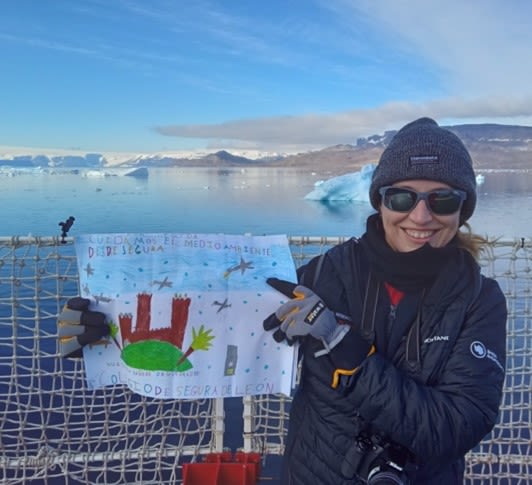
Isabel Seguro with the children's art work in Antarctica. Credit: Natalia Osma.
Isabel Seguro with the children's art work in Antarctica. Credit: Natalia Osma.
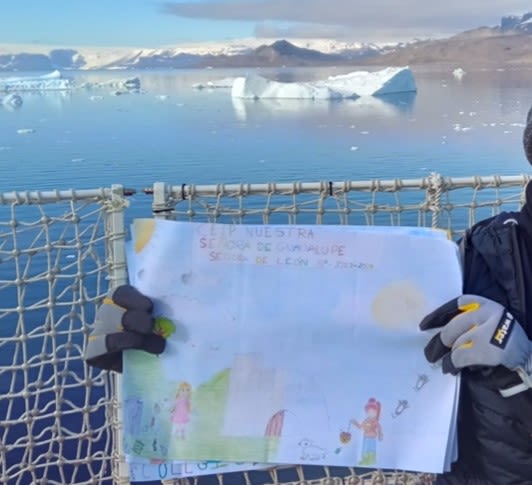
Isabel Seguro with the children's art work in Antarctica. Credit: Natalia Osma.
Isabel Seguro with the children's art work in Antarctica. Credit: Natalia Osma.
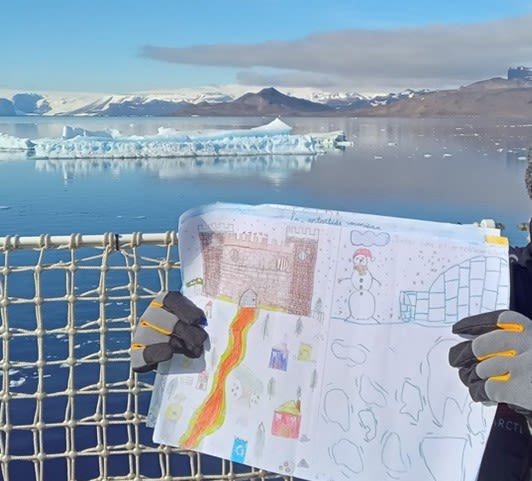
Isabel Seguro with the children's art work in Antarctica. Credit: Natalia Osma.
Isabel Seguro with the children's art work in Antarctica. Credit: Natalia Osma.
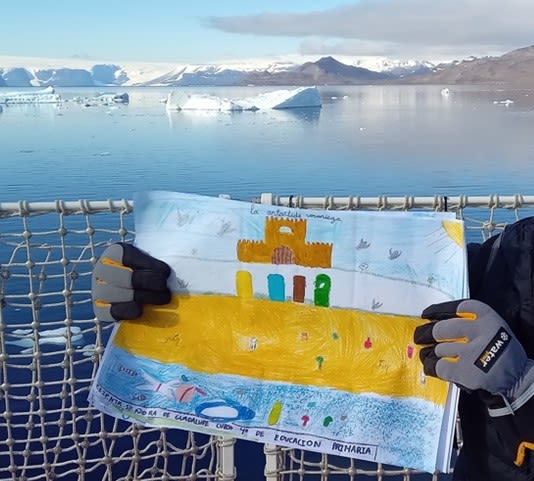
Isabel Seguro with the children's art work in Antarctica. Credit: Natalia Osma.
Isabel Seguro with the children's art work in Antarctica. Credit: Natalia Osma.
Antarctic landscapes
22 February 2024
Drone footage of an iceberg. Credit: Carson McAfee (BAS).
Drone footage of an iceberg. Credit: Carson McAfee (BAS).
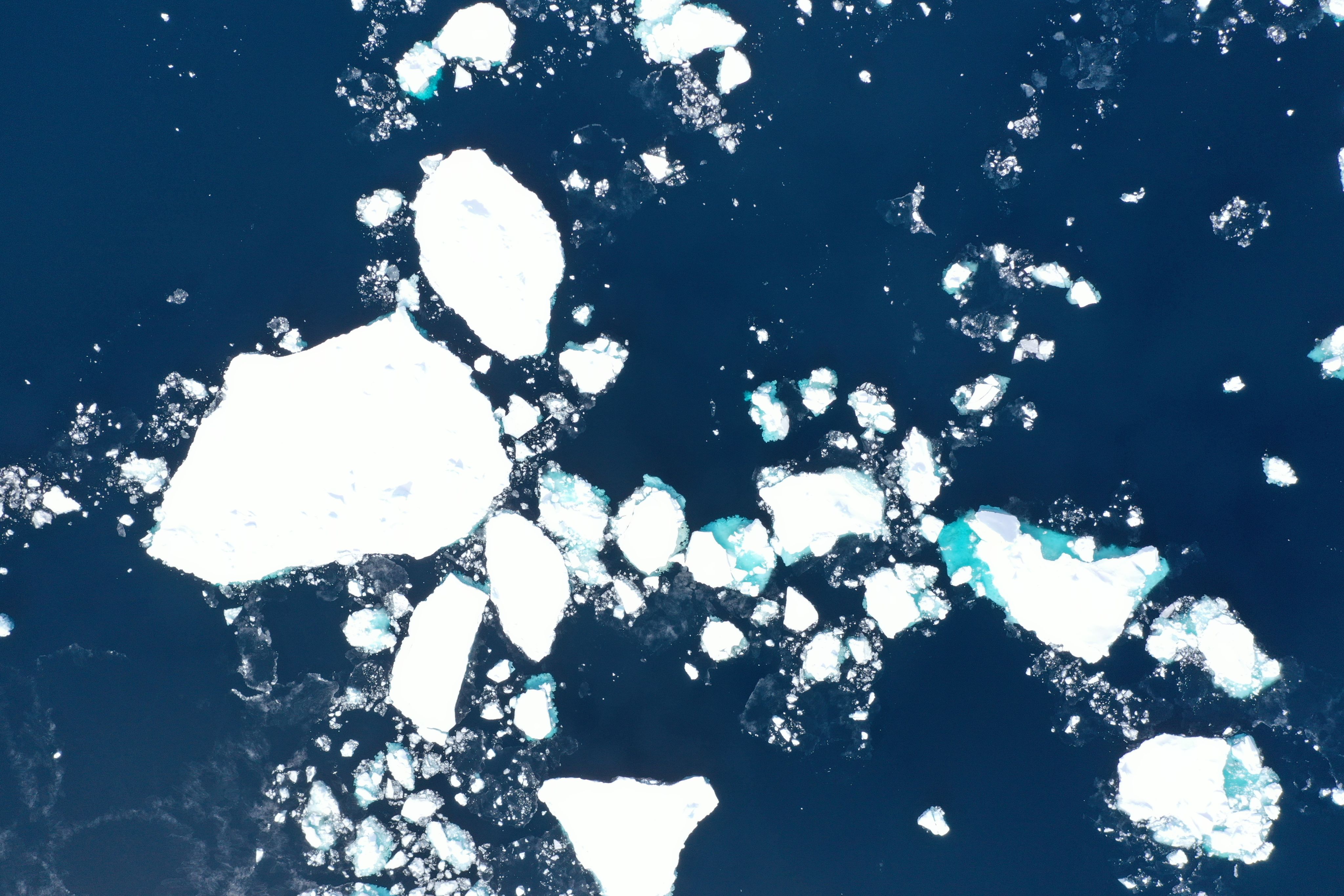
Overhead shot of scattered icebergs. Credit: Carson McAfee (BAS)
Overhead shot of scattered icebergs. Credit: Carson McAfee (BAS)
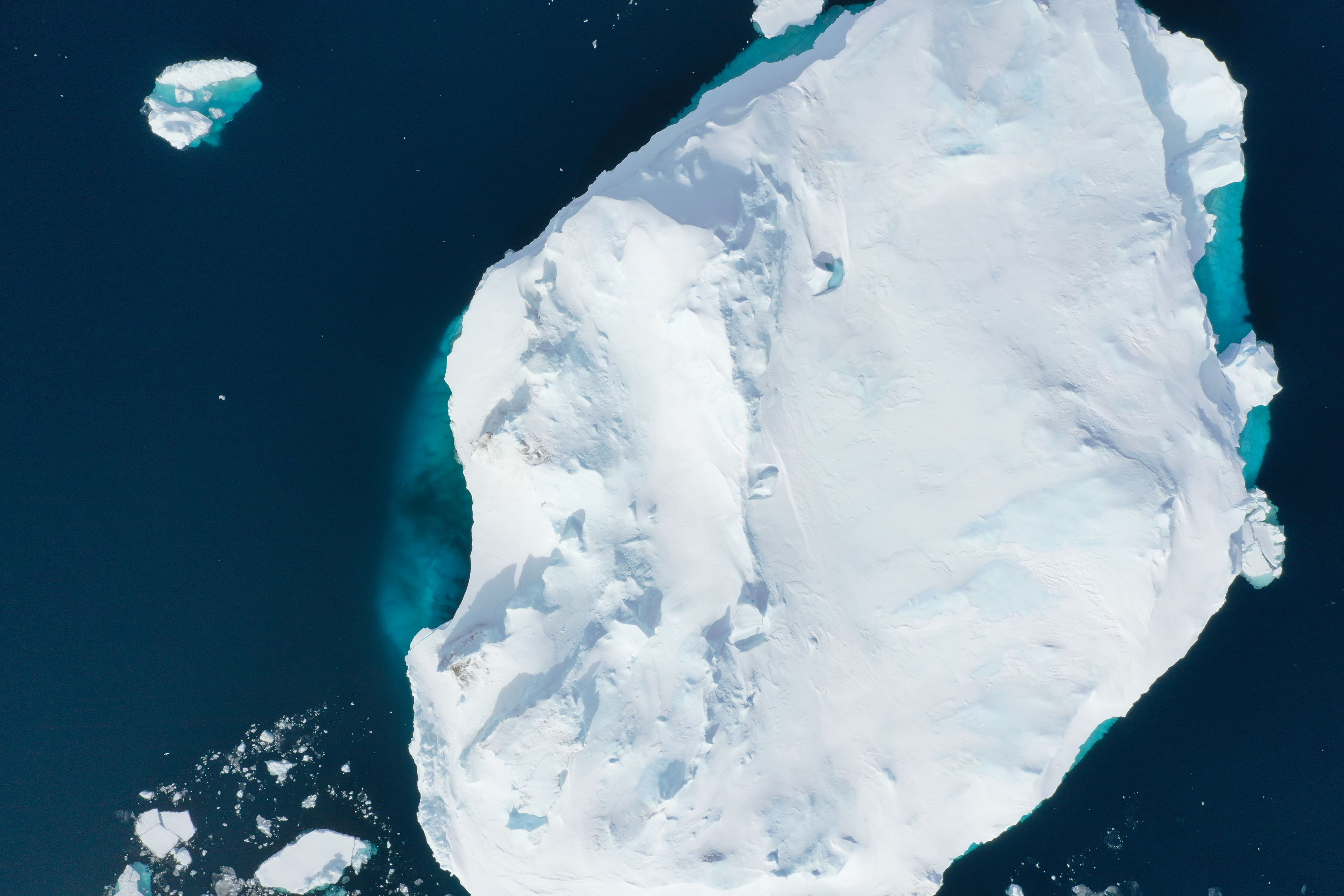
An overhead shot of an iceberg. Credit: Carson McAfee (BAS).
An overhead shot of an iceberg. Credit: Carson McAfee (BAS).
20 February - Yixi Zheng (UEA)
Sometimes I forget how privileged we are to be in this remote place, but those icebergs always remind me of this.
One by one, those icebergs come to us following their fates. I see their figures shrinking and expanding though our windows. I embrace each with joy, and say farewell to them with a tad feeling of loss. Whether large or small, they do not drift fast with the impulse of waves, but move slowly and quietly near in their own place. If they were to gaze around, I wonder if they would notice a friend who just arrived and is now departing. I know it is very likely the last time I see them, and probably the last time they see a human.
Icebergs are glacial pieces that have detached from glaciers into the ocean. Where we are, the western Weddell Sea, they are normally calved from the Filchner and Ronne Ice Shelves or Larsen Ice Shelf and they preserve the features of these ice shelves.
This iceberg contains many blue and white layers. The difference of the colour is a result of the changing seasons. When snow accumulates on the top of a glacier, it builds a white layer of very fluffy snow. This layer of snow will then be separated into two layers. The lower layer is compressed by the gravity and forms a layer of bubble-rich ice, therefore becoming white because the bubbles reflect a broad spectrum of light. Another layer melts in summer and releases the bubbles before it refreezes in winter, so it becomes blue due to the lack of bubbles. Every year, a blue layer of relatively solid ice and a white layer of relatively loose ice are formed. The layers of this iceberg are very clearly shown here as the snow covering it has been washed off by seawater.
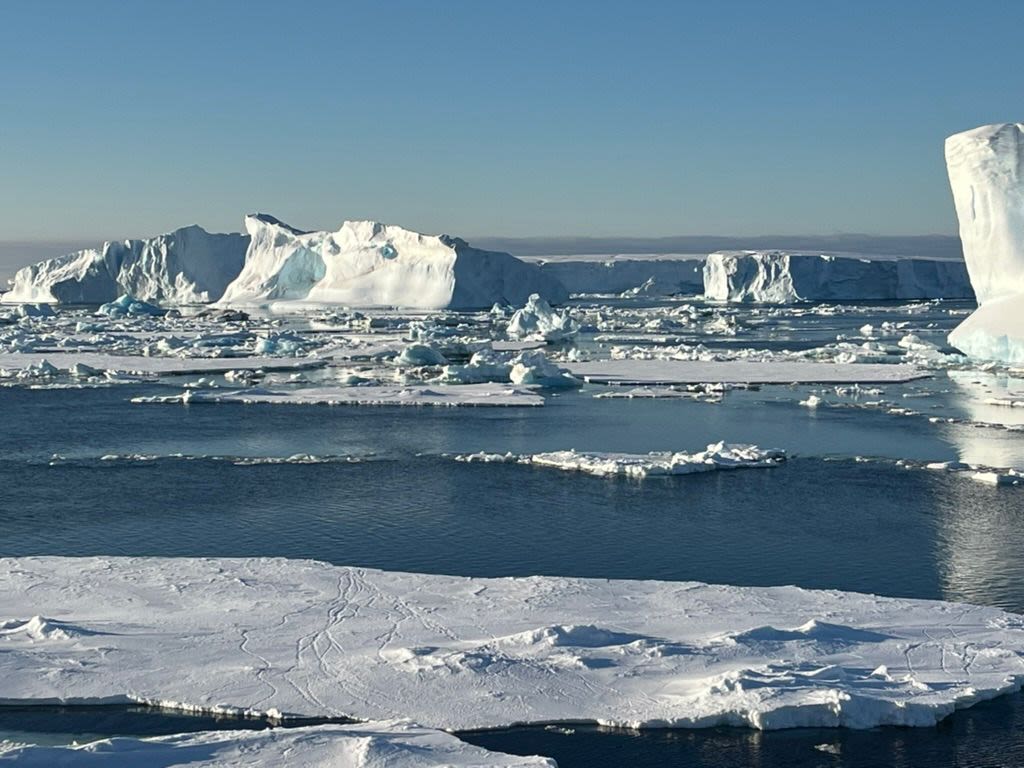
Craggy icebergs and sea ice. Credit: Karen Heywood (UEA)
Karen Heywood (UEA)
Icebergs come in all shapes and sizes. Sometimes they have flat tops and steep cliffs on the sides. These icebergs have seen better days - they’ve probably come a long way from their parent ice shelves, and encountered rough weather and bumped into other icebergs, hence their craggy appearance. The flat area of ice in the front of this photo isn’t from icebergs, it is frozen seawater and is much flatter and thinner, maybe a metre or so thick. The seals and penguins ride along on the sea ice.
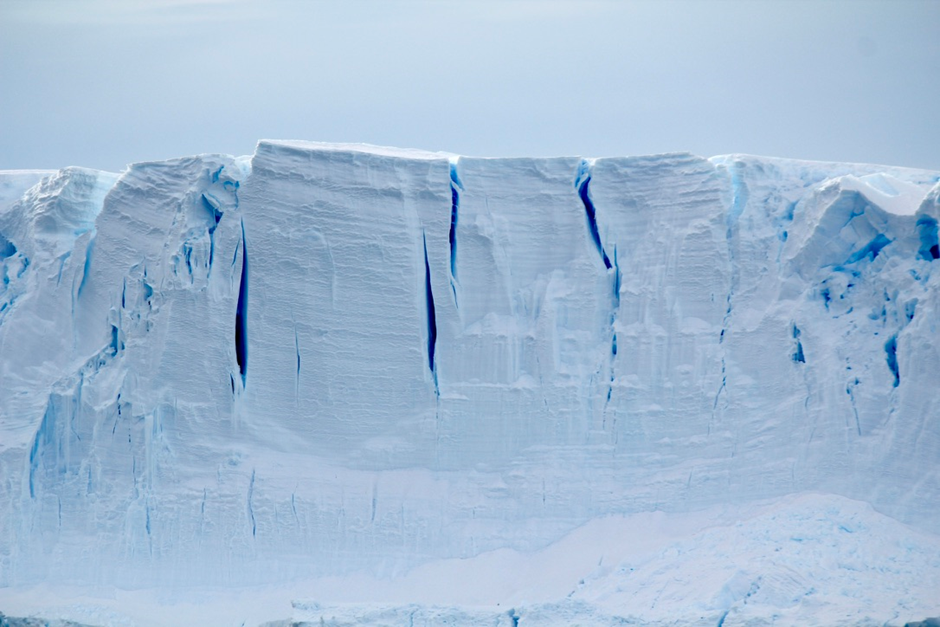
Ice shelf in the Amundsen Sea. Credit: Yixi Zheng (UEA).
Ice shelf in the Amundsen Sea. Credit: Yixi Zheng (UEA).

Ice shelf in the Amundsen Sea. Credit: Yixi Zheng (UEA).
Ice shelf in the Amundsen Sea. Credit: Yixi Zheng (UEA).

Craggy icebergs and sea ice. Credit: Karen Heywood (UEA)
Craggy icebergs and sea ice. Credit: Karen Heywood (UEA)
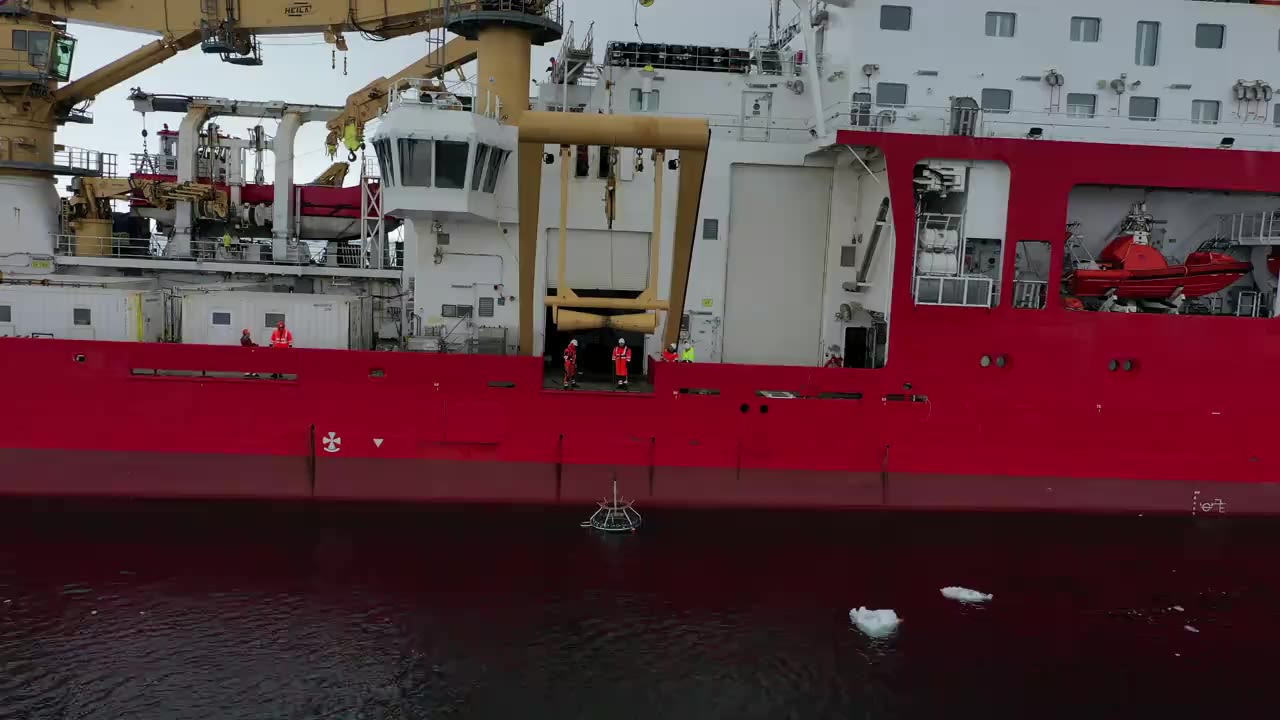
Retrieving the CTD
15 February - Prof Karen Heywood
We’re just coming to the end of a pretty intensive ten days, putting the CTD into the water about eight times each day. So far on the expedition the CTD has been winched up and down from the ocean surface to the sea bed and back 112 times. That’s a total distance of 238 km – if we put all those vertical profiles end to end, they would stretch from Norwich to Birmingham!
15 February - Maren Richter (UEA)
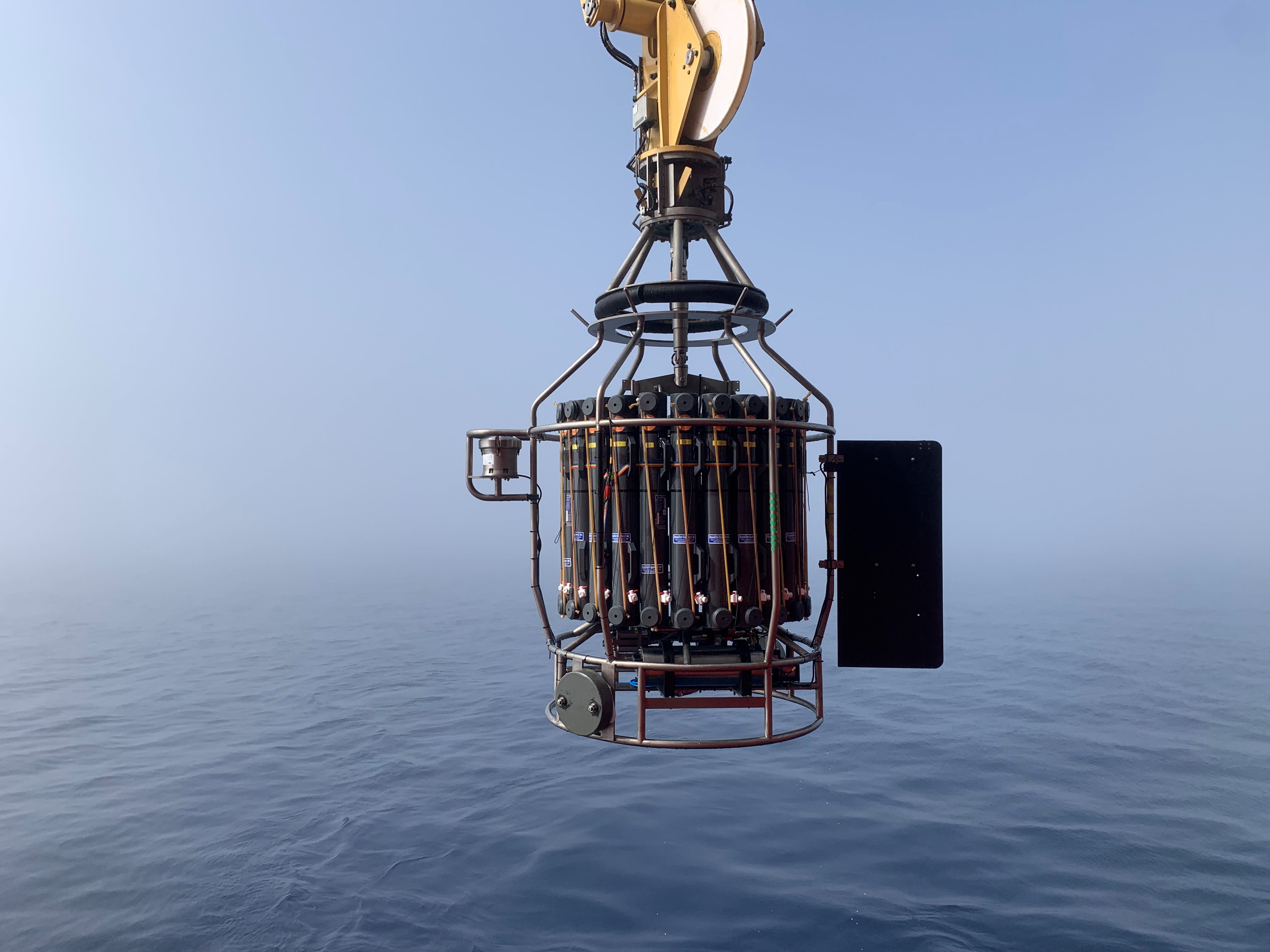
The CTD. Credit: Yixi Zheng (UEA).
Even though the focus of the PICCOLO cruise is biology and chemistry, one of the core instruments on the ship is the CTD, the physical oceanographer’s workhorse. CTD stands for conductivity, temperature and depth and it measures the physical properties of the ocean water: how salty it is, its temperature and at what depth the measurement was recorded. From this we can then calculate things like density (important for how and where the ocean water moves) and tell where the water came from: is it very fresh and cold? Probably meltwater at the surface. Is it warm and salty? Probably water that came here all the way from the sub-Antarctic and subtropics. Is it very salty and very cold? This is water that forms when the ocean cools enough to form sea ice. The ice is fresher than the ocean water it is formed from and the salt that gets expelled from the ice during formation makes the ocean beneath more salty.
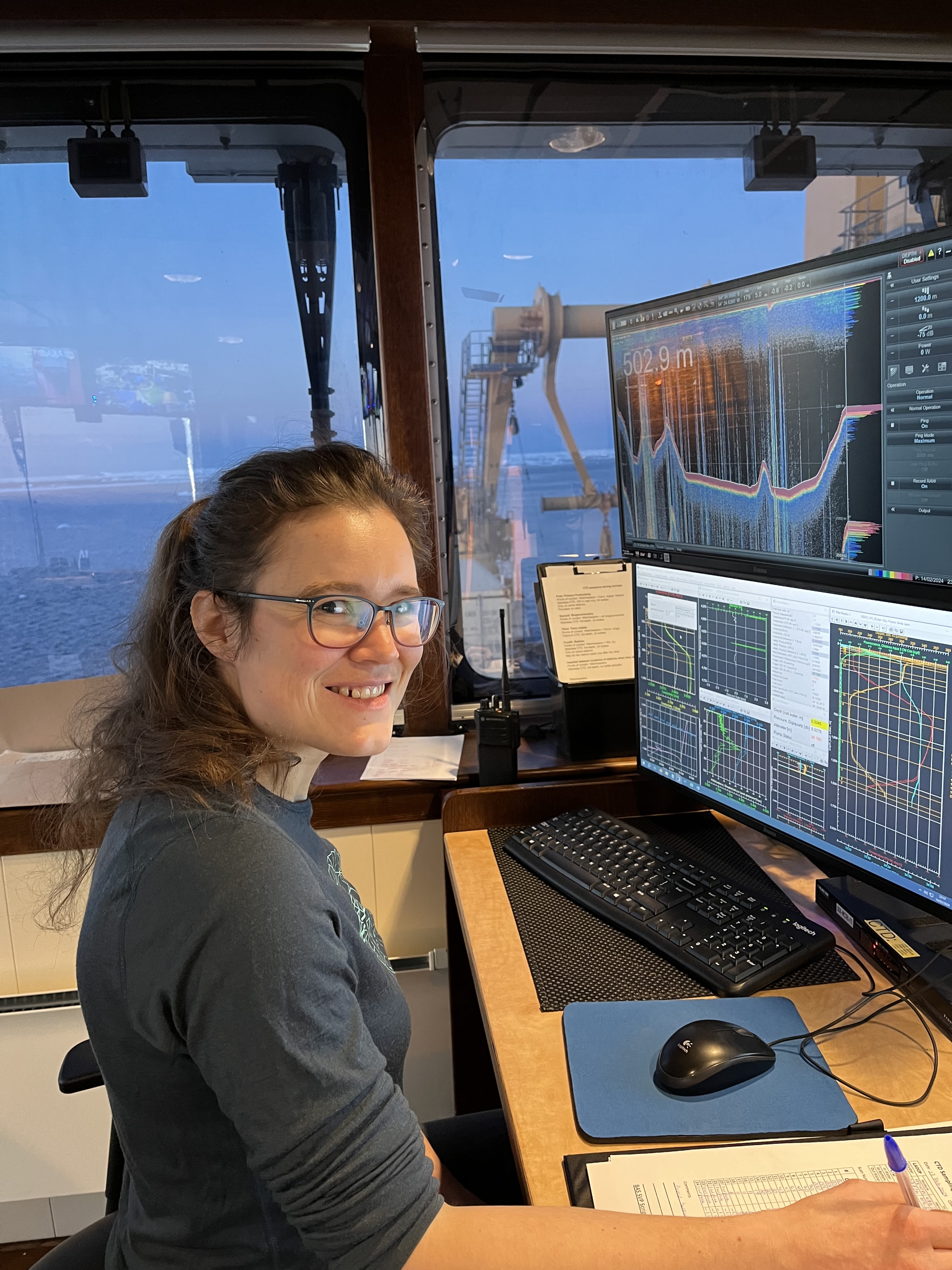
Maren Richter operating the CTD. Credit: Karen Heywood.
Our CTD also has an instrument on it that uses sound to measure velocity. It is called an acoustic Doppler current profiler or ADCP for short. It works by emitting a sound wave and then listening for the echo. The sound gets reflected from tiny particles in the water, plankton or sediment, and depending on which way the particles are moving at the time, the echo has a higher or lower sound frequency. This is the same effect that makes the claxon on an ambulance sound different when it is driving toward you compared with when it is driving away from you. With the combination of CTD and ADCP we can now tell how (and roughly where) the water was formed and the speed and direction it is moving at currently. We also have a lot of additional instruments attached to our CTD; sensors that measure oxygen, light and chlorophyll in the water are some examples.
"Every time we collect water with the CTD, we bring up 480 litres – almost half a tonne of water!"
For everything that we cannot measure directly from sensors, we take water samples. The CTD frame has 24 20-litre bottles attached to it and the CTD operator can close them as the CTD comes up through the water column at whatever depth they like. The water then gets sampled by the different research teams on board to test for nutrients, calcium carbonate, oxygen, phytoplankton, trace metals, radium, etc. Every time we collect water with the CTD, we bring up 480 litres – almost half a tonne of water! Sometimes not all the water is needed and the deck crew have to sweep all that water out of the science hangar after the bottles have been emptied straight onto the deck! The deck of the SDA is kept nice and clean with all that scrubbing.
On PICCOLO, we measure the water column from the surface to the sea floor every couple of miles along a straight line from the deep ocean onto the shallower regions close to the coast. Each time, the ship has to stop, and we lower the CTD into the water on a very long wire. It can take up to four hours for the CTD to be lowered from the surface to the bottom of the ocean and back again. The ship has to try to stay in the same place all that time, which can be difficult in strong winds or when there’s lots of sea ice around. Our data show us how the water properties change from deep to shallow regions, how much water is transported in the currents that flow along the slope between the deep ocean and the coast, and in which direction it is going. This can then be combined with information on the plankton and krill we find to show which areas have more or less animals and plants and take up more or less CO2.
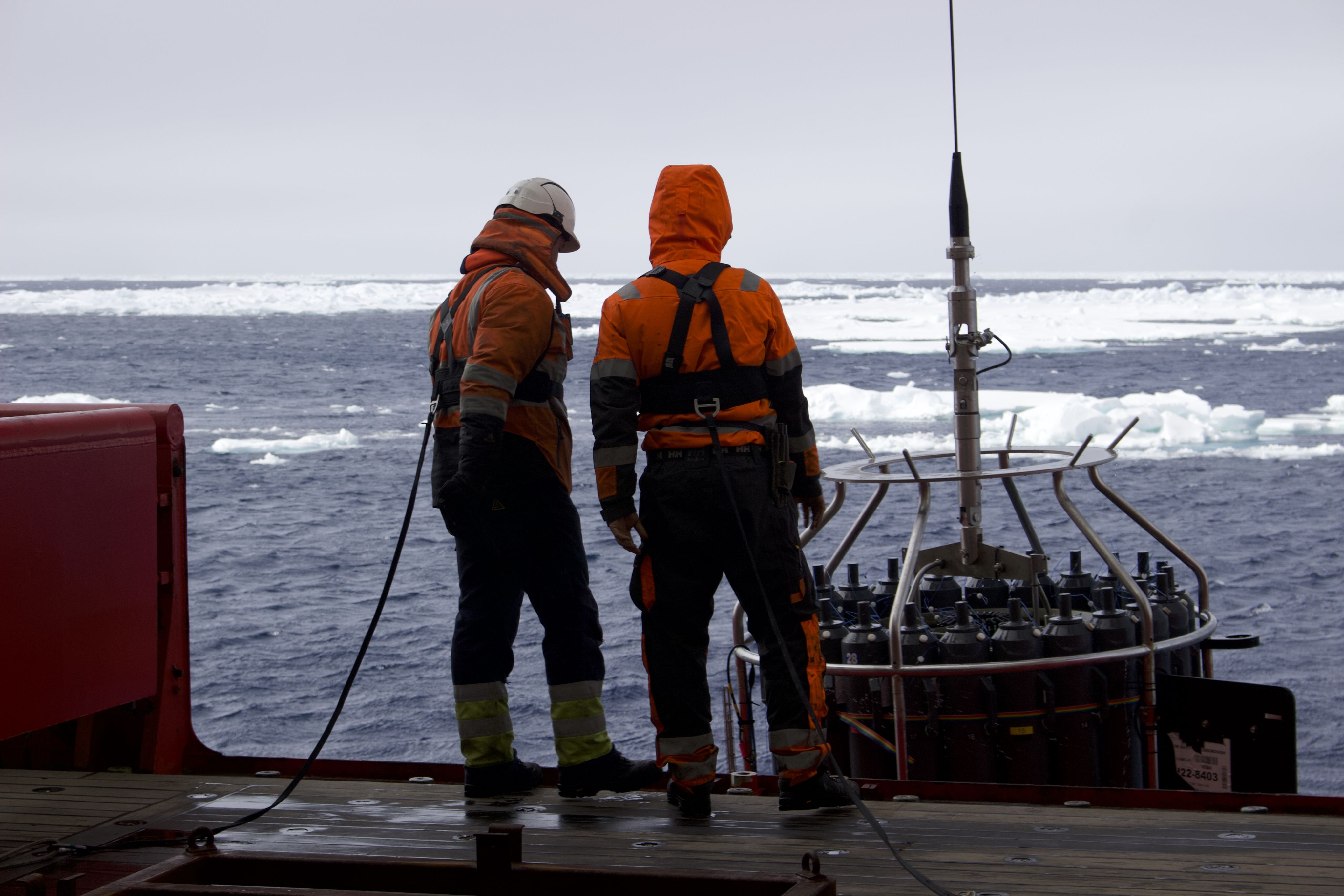
PICCOLO crew members, Gethyn and Joe. Credit: Katy Cartlidge (British Antarctic Survey).
Because we steam along day and night and some of the teams collecting water samples need to collect them in darkness, we have both a day shift and a night shift operating the CTD. Luckily, the period in which it is really dark is only five hours or so. The night team does get to see some light at the edges of their shift.

The CTD. Credit: Yixi Zheng (UEA).
The CTD. Credit: Yixi Zheng (UEA).

Maren Richter operating the CTD. Credit: Karen Heywood.
Maren Richter operating the CTD. Credit: Karen Heywood.

PICCOLO crew members, Gethyn and Joe. Credit: Katy Cartlidge (British Antarctic Survey).
PICCOLO crew members, Gethyn and Joe. Credit: Katy Cartlidge (British Antarctic Survey).
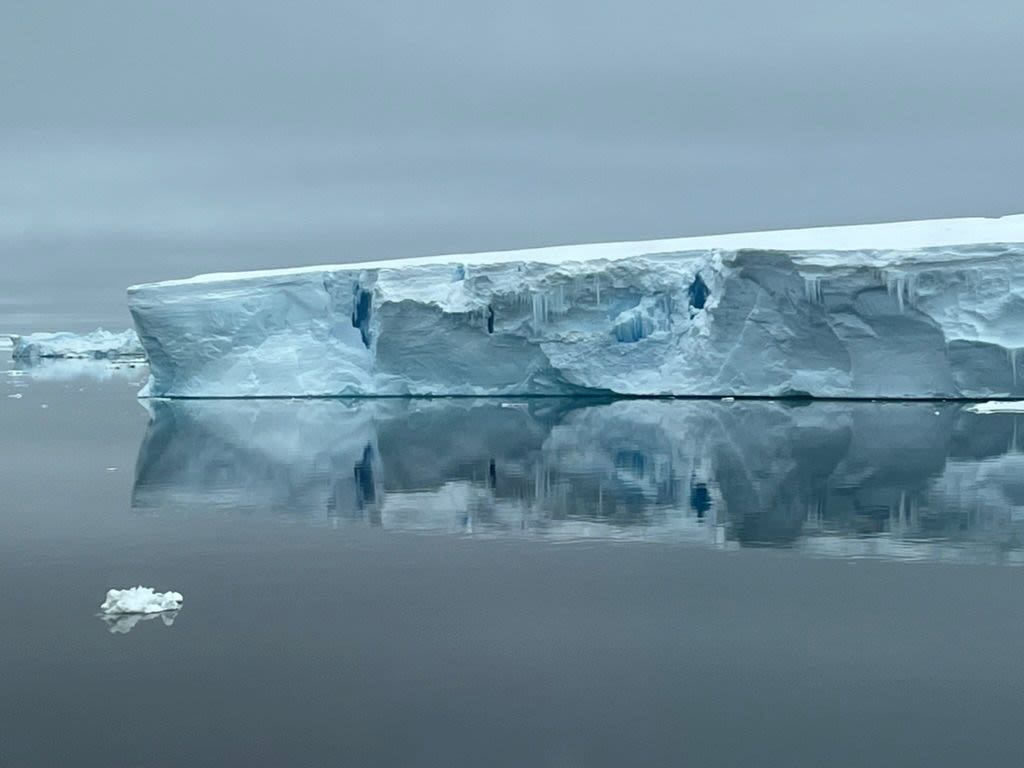
An iceberg in the Larsen Ice Shelf. Credit: Prof Karen Heywood (UEA)
An iceberg in the Larsen Ice Shelf. Credit: Prof Karen Heywood (UEA)
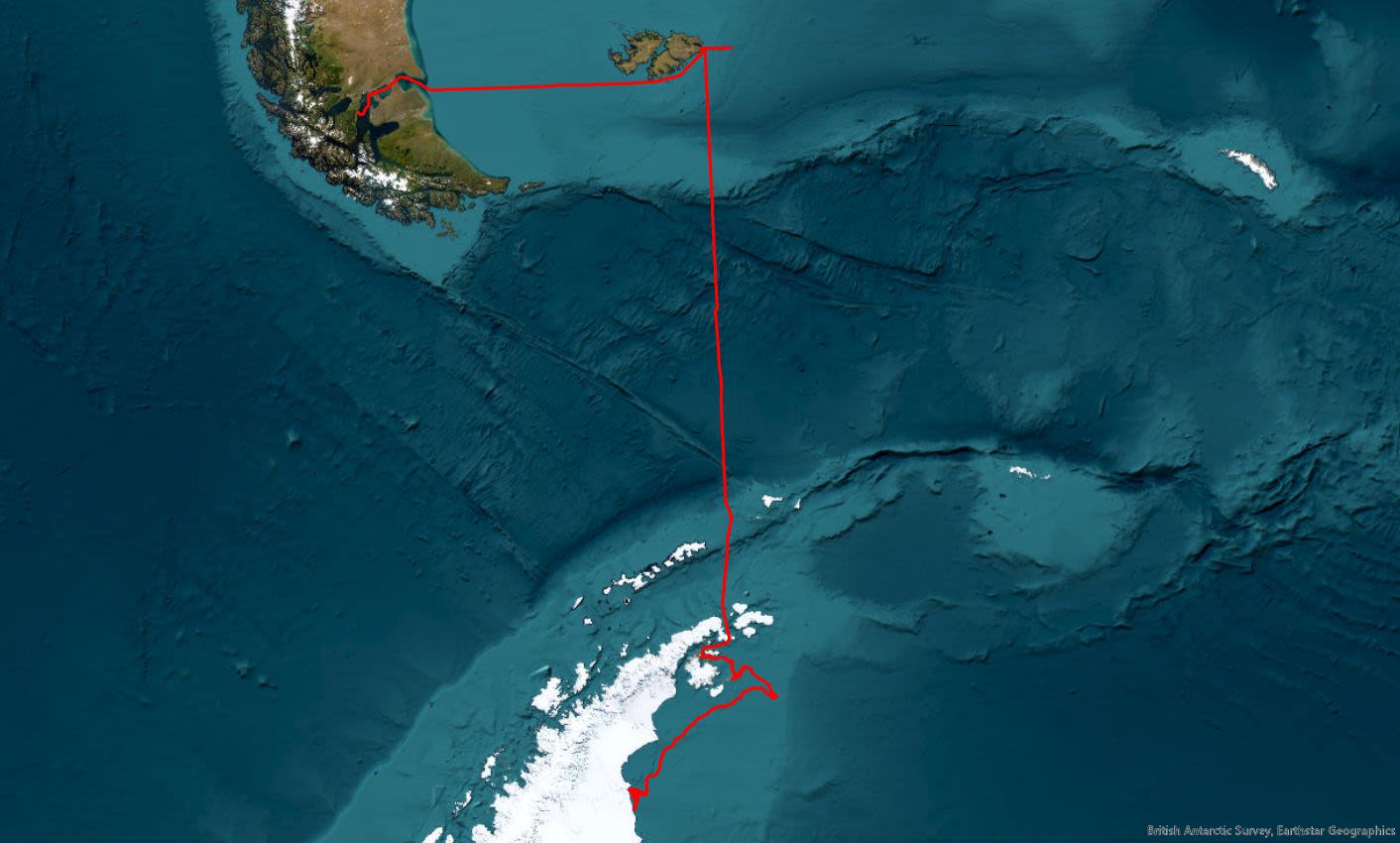
Route of the PICCOLO cruise so far. Credit: Alexander Tate (BAS)
Route of the PICCOLO cruise so far. Credit: Alexander Tate (BAS)
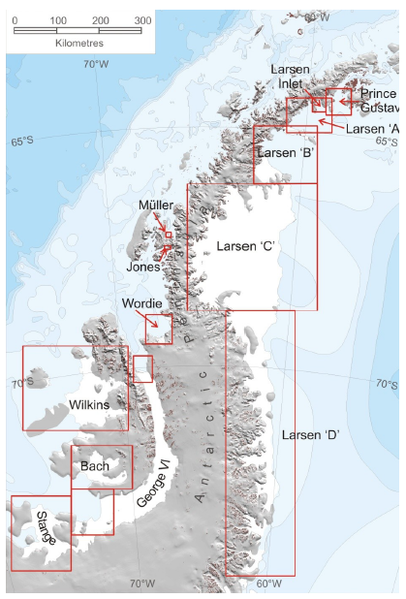
Larsen Ice Shelf Credit: A.J. Cook and D. G. Vaughan
Larsen Ice Shelf Credit: A.J. Cook and D. G. Vaughan
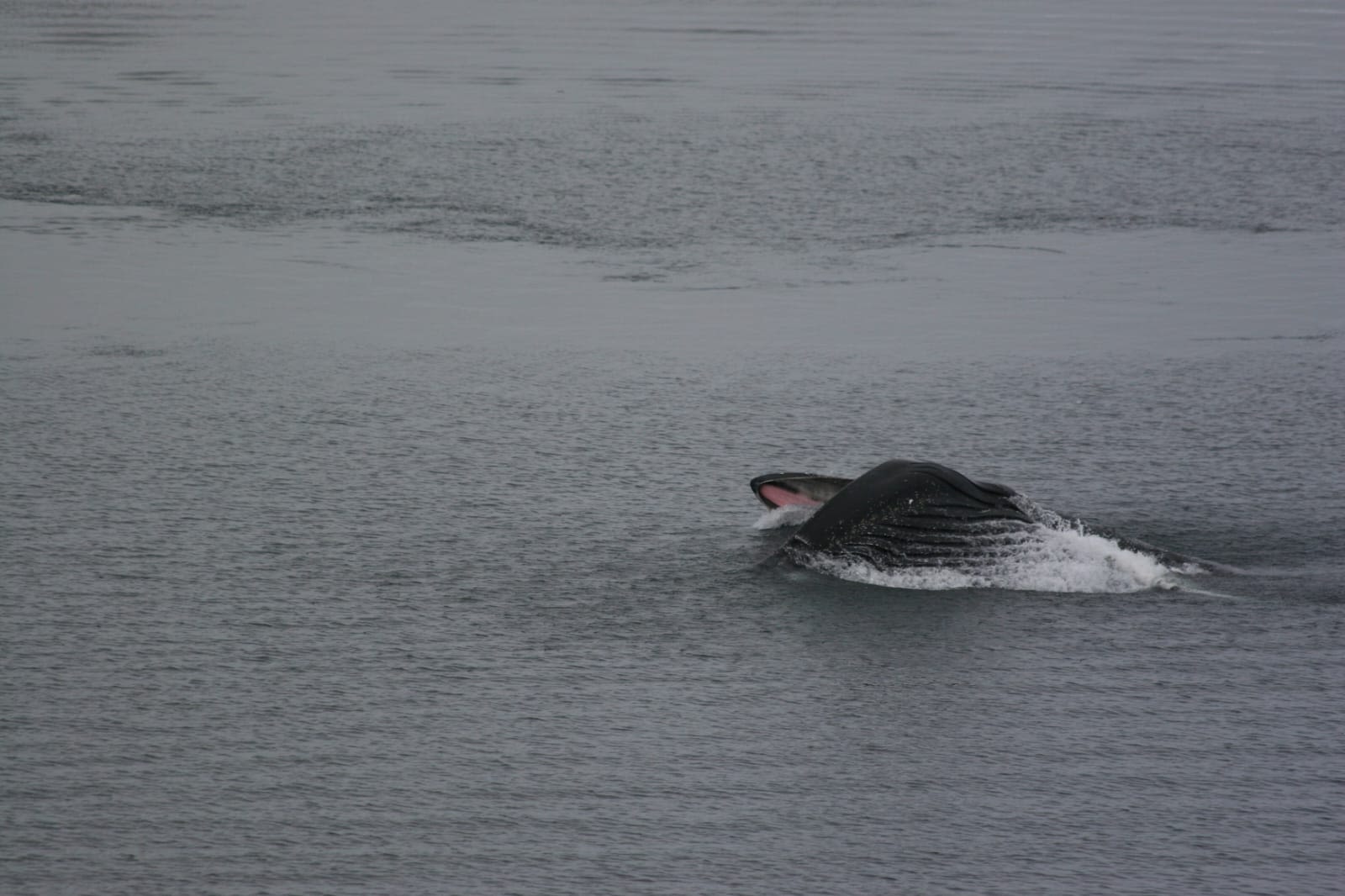
Humpback whale Credit: Vas Kitidis (Plymouth Marine Laboratory)
Humpback whale Credit: Vas Kitidis (Plymouth Marine Laboratory)
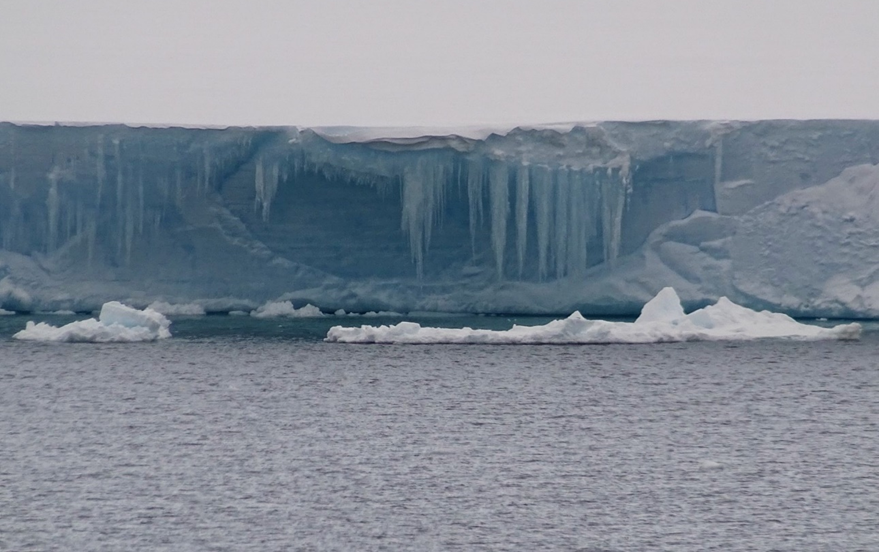
Larsen C ice front. Credit: Bob Brewin (University of Exeter)
Larsen C ice front. Credit: Bob Brewin (University of Exeter)
A rare visit to the Larsen Ice Shelf
2 February 2024
The PICCOLO cruise recently stopped by the Larsen Ice Shelf, an area visited only twice for oceanographic research since March 2002. Twenty-years ago, Keith Nicholls, from the British Antarctic Survey (BAS), was on that scientifc cruise and witnessed the Larsen B Ice Shelf disintegrating, generating thousands of icebergs heading out to sea.

An iceberg in the Larsen Ice Shelf. Credit: Prof Karen Heywood (UEA)
I remember looking out from the bridge of RRS James Clark Ross over to where Larsen B Ice Shelf should have been, and seeing a lot of icebergs swarming towards us. Clearly the captain could see them too, as he spent a lot of time looking over his shoulder to make sure his escape route was clear.
We managed to visit the northern end of the Larsen C ice front, and were able to measure the properties of the water flowing out from the ocean cavity beneath the ice shelf. Little did I know in 2002 that, 22 years later, I would be revisiting the same area on RRS James Clark Ross’ successor, RRS Sir David Attenborough during the PICCOLO cruise.
This time, though, we can do so much more. We have a ship full of eager biologists and geochemists with their attendant instruments, so we’ve been able to measure not only the temperature and salinity of the water flowing from beneath the ice front but also its detailed chemical composition and impact on the local ecosystem.
Professor Karen Heywood recounts how extraordinary an opportunity it was to visit the Larsen C Ice Shelf.
Sometimes it feels like you’re living in a painting.
It’s been amazing and a privilege to be here. Since Keith Nicholls visited in 2002, only two groups of scientists have been here, on the German research vessel Polarstern. It’s usually completely inaccessible because there’s thick sea ice all year round. We were lucky this year that there was a gap in the ice so we could get there. I’ve tried to come here before, in 2012, but we had to work further north on the Antarctic Peninsula because it was inaccessible. Amazing to have made it!

Route of the PICCOLO cruise so far. Credit: Alexander Tate (BAS)
Ice shelves are particularly interesting, both for the physical oceanographers like me, and for the biogeochemists. Snow falls on Antarctica, and forms a thick layer of ice. This ice flows slowly towards the sea in lots of huge glaciers. When these glaciers reach the sea, they float on the sea - that’s what we call an ice shelf. Ice is less dense than water, which is why ice cubes float in your drinks. That ice in the ice shelf is now old, maybe hundreds of years at the base of the ice shelf. The fronts of ice shelves break off every now and then, forming icebergs. This is a normal part of the cycle of water going from snow to ice to icebergs to the sea.

Larsen Ice Shelf Credit: A.J. Cook and D. G. Vaughan
Ice shelves are also melting from their undersides where they come into contact with seawater that is warmer than the ice, and from their surface where they come into contact with winds that are warmer than the ice. The Larsen C Ice Shelf is believed to be melting both ways. As a physical oceanographer, I’m interested in how much meltwater is being produced, and where it is going.

Humpback whale Credit: Vas Kitidis (Plymouth Marine Laboratory)
The biogeochemists are interested in that meltwater too. Glaciers tend to include tiny particles of rocks from where they grind slowly over the continent. When they melt, these nutrients and minerals are released, and help the plankton to grow - like putting fertiliser on your lawn. Our PICCOLO project made the first measurements of how much the plankton are growing around the Larsen ice shelf, how healthy they were, and what’s feeding on them - the whole ecosystem.
The icebergs have been amazing too - they’re all different shades of blue, white or grey. Sometimes it feels like you’re living in a painting.

Larsen C ice front. Credit: Bob Brewin (University of Exeter)
Keith Nicholls (BAS):
Steaming past Jason Peninsula brought back fond memories, and the Larsen C ice front, a 35 metre high ice cliff stretching away hundreds of miles to the south, is a spine tingling sight. The northern end of Larsen C Ice Shelf has been visited amazingly infrequently by ships in general, and especially for oceanographic research. The interaction between the ocean and ice shelves, the floating periphery of the Antarctic Ice Sheet, has fascinated me my whole career. I feel very privileged to have been present on two of the very few occasions that the ocean conditions have been explored in any sort of detail.
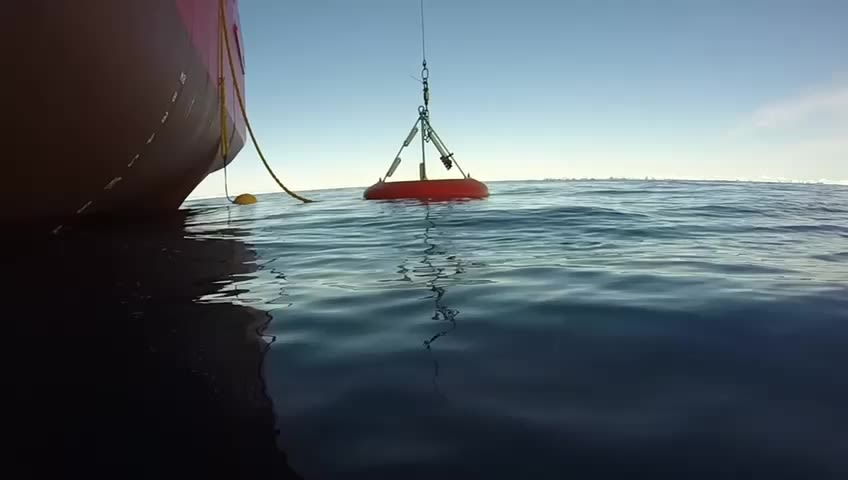
Instruments (re)deployed
30 January - Prof Karen Heywood (UEA)
We redeployed the mooring today, in the same site, for just for one month. When the mooring was deployed for a year, it could collect samples every 2 weeks. Deploying just for a month means we can take samples every day and get a better idea of how much the ocean characteristics change from day to day. It puts our year-long time series of data in context. We will recover the mooring again at the end of February.
Ocean gliders
31 January–3 February 2024
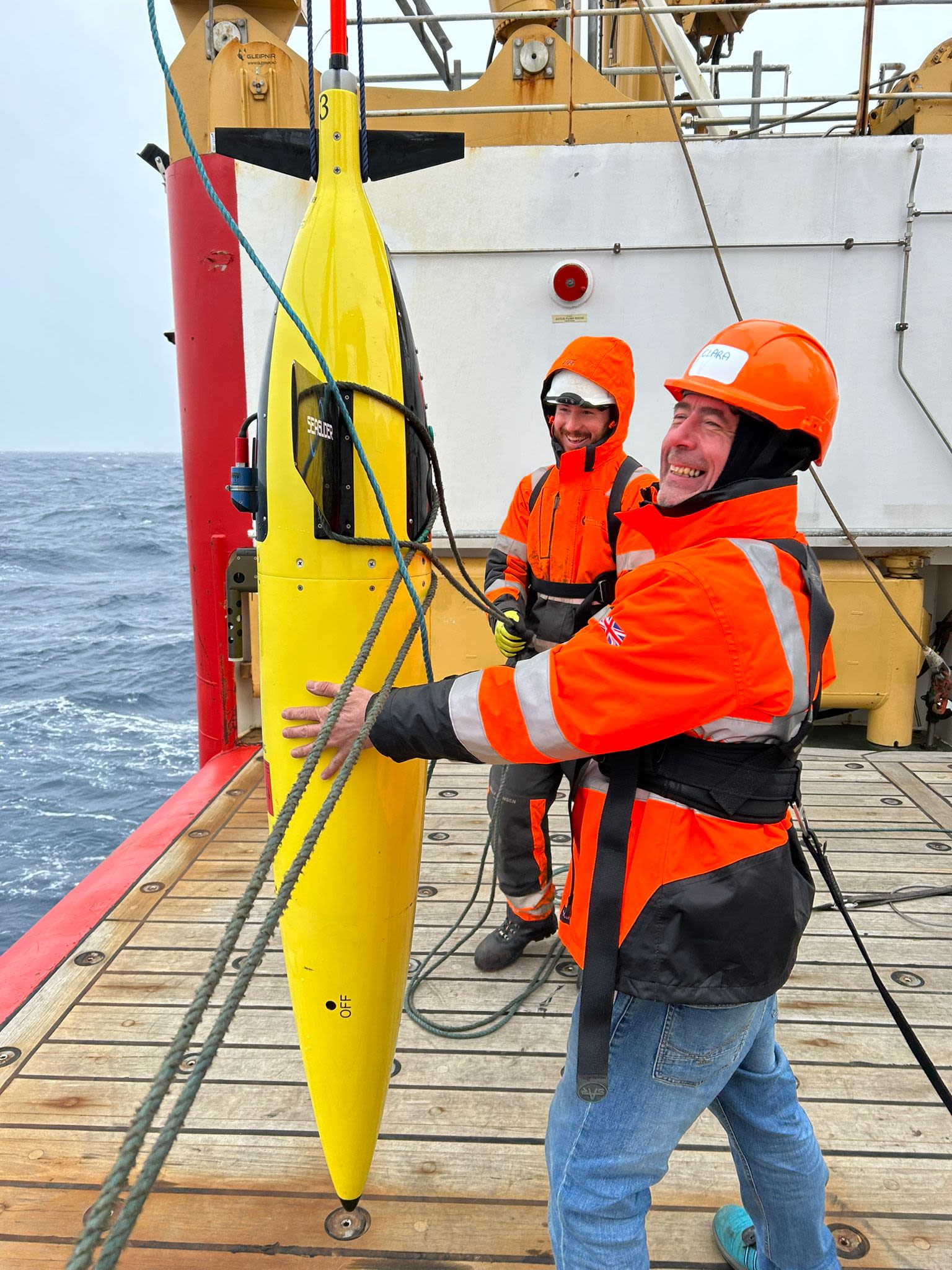
Gareth Lee (UEA)and Joe Laurence (crew) with an ocean glider. Credit: Sophie Fielding (BAS)
Gareth Lee (UEA)and Joe Laurence (crew) with an ocean glider. Credit: Sophie Fielding (BAS)
Ocean gliders are a type of robotic underwater vehicle used for measuring oceanographic parameters such as chlorophyll levels, temperature and salinity, which are then transmitted back to the shore. They are very effective tools for gathering data from the ocean and carry a great variety of instruments.
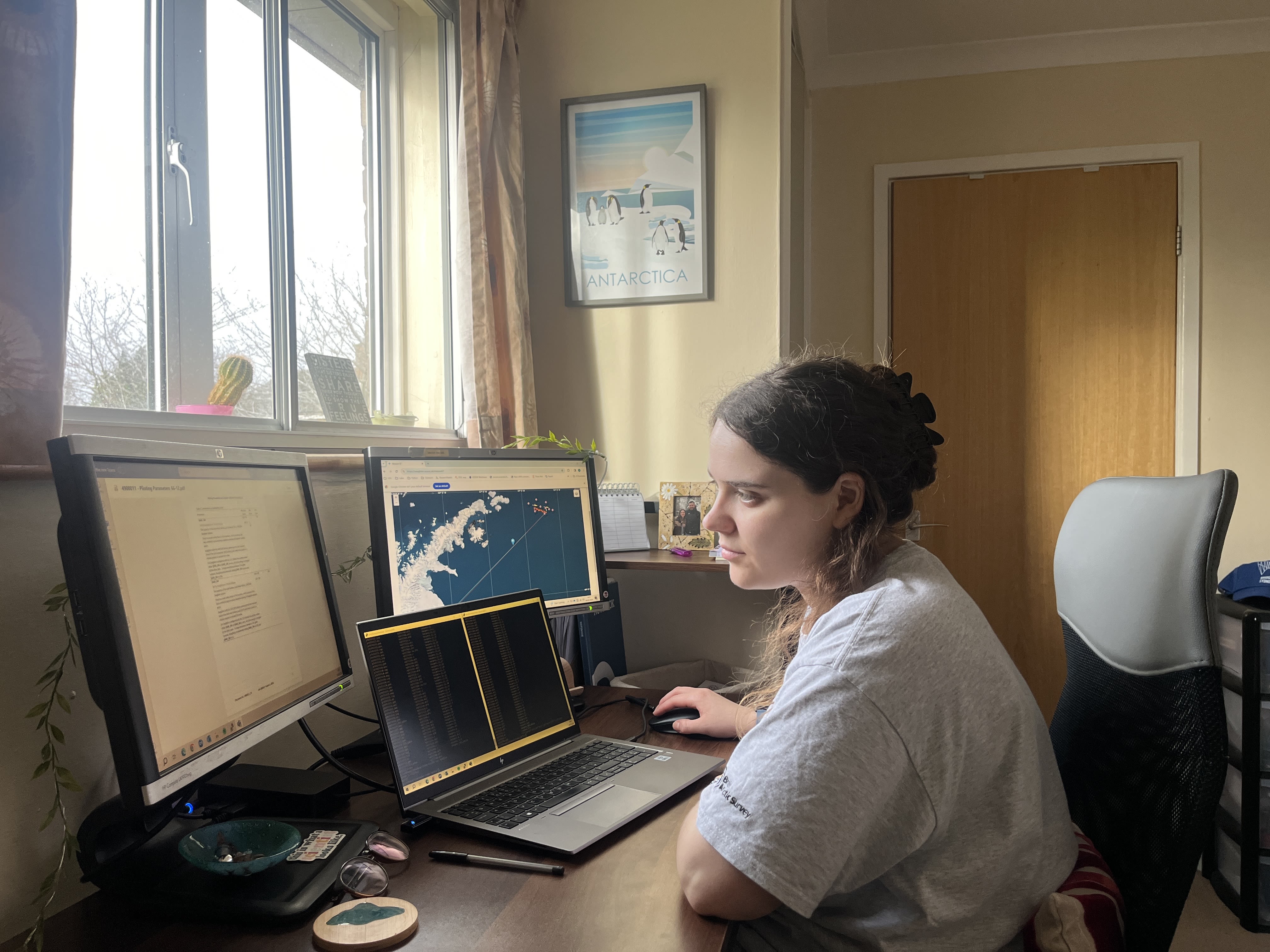
UEA's Daisy Pickup piloting a glider in the Antarctic from Norwich.
UEA's Daisy Pickup piloting a glider in the Antarctic from Norwich.
The ocean gliders were deployed just off the Larsen Ice Shelf. They were piloted remotely by colleagues back at UEA whilst the rest of the ship was busy making other measurements from the ship.
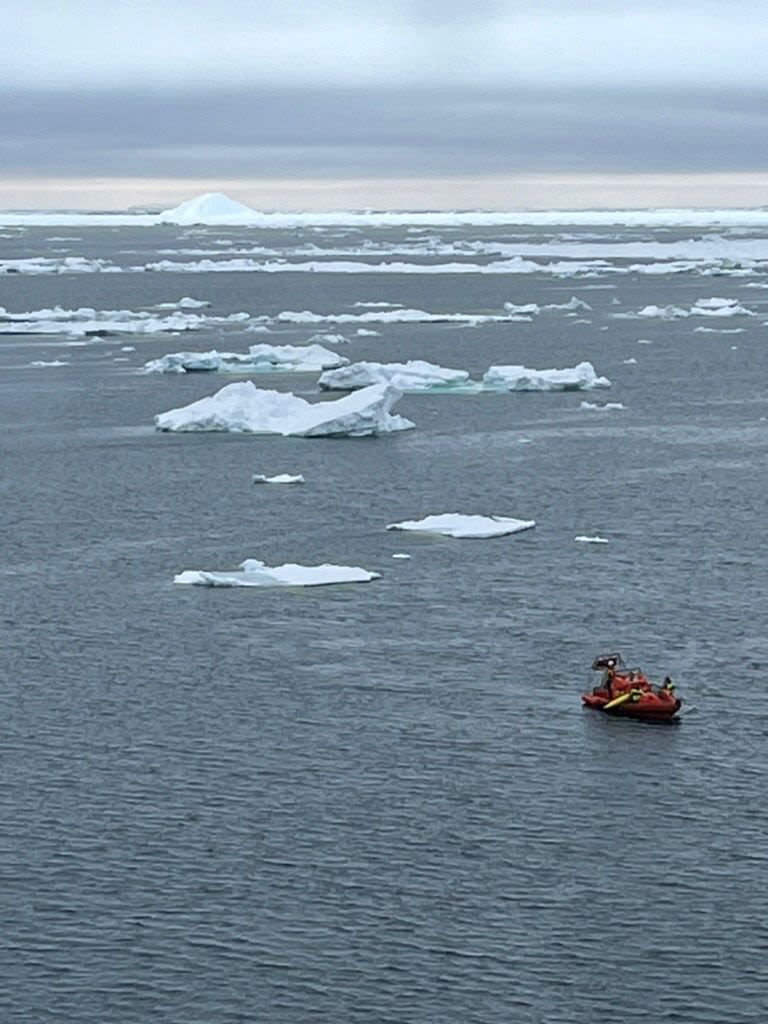
Recovering the ocean gliders (3 February 2024) . Credit: Prof Karen Heywood
Recovering the ocean gliders (3 February 2024) . Credit: Prof Karen Heywood
The ship's little rescue boat recovered the gliders at the end of the RSS Sir David Attenborough's stay in the Larsen Ice Shelf.
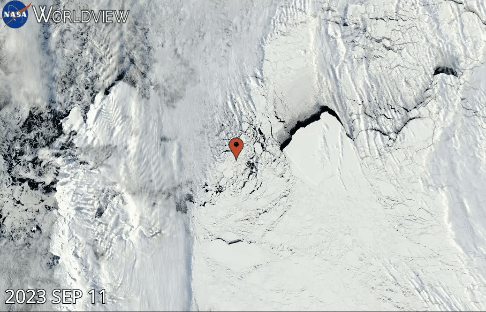
The mooring has a close encounter with iceberg A23. Image: Yixi Zheng (UEA) with source material from NASA’s Worldview
The mooring has a close encounter with iceberg A23. Image: Yixi Zheng (UEA) with source material from NASA’s Worldview
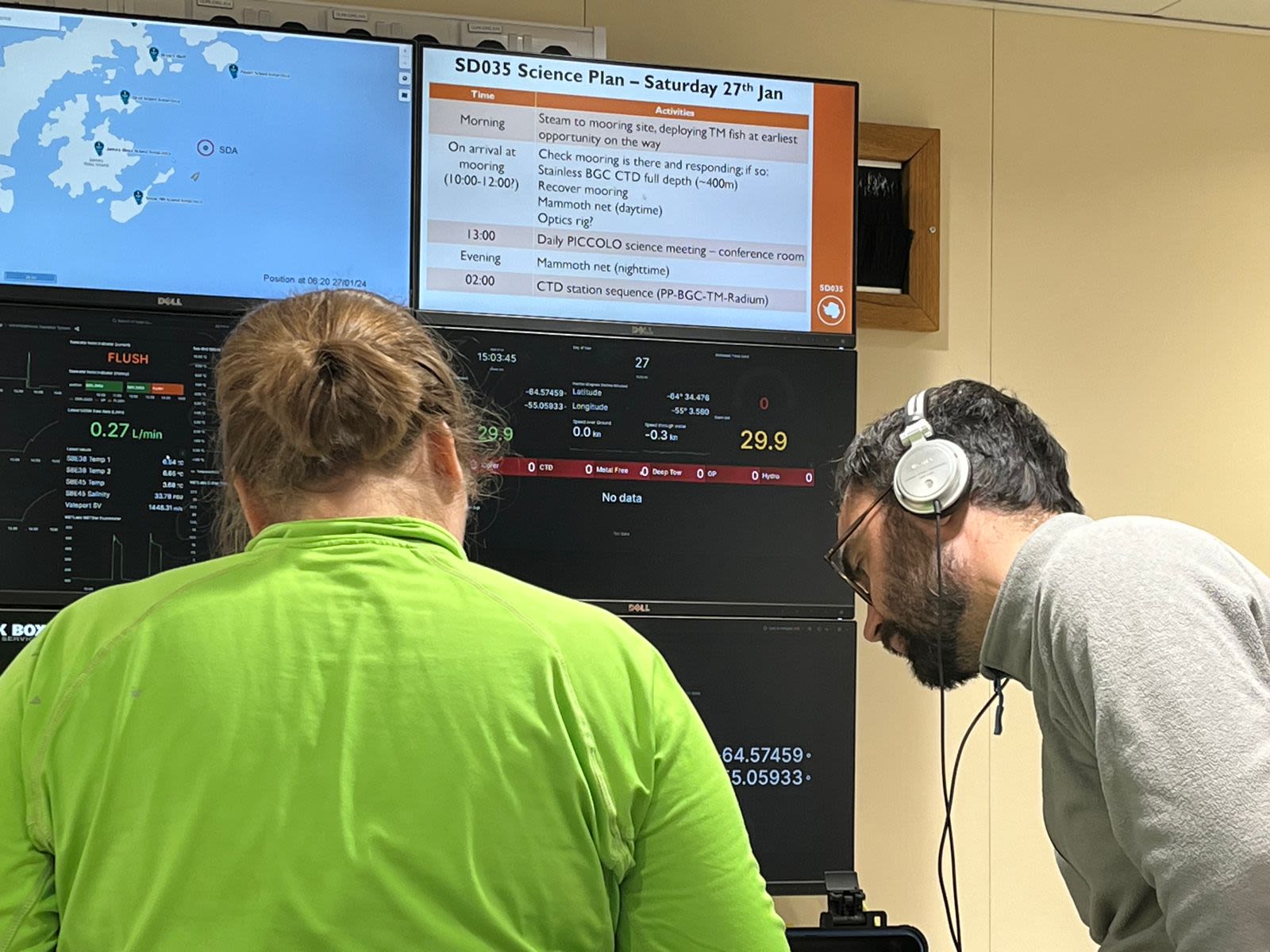
Sophie Fielding (BAS) and Gareth Flint (UEA) listening for the mooring Image: Prof Karen Heywood
Sophie Fielding (BAS) and Gareth Flint (UEA) listening for the mooring Image: Prof Karen Heywood
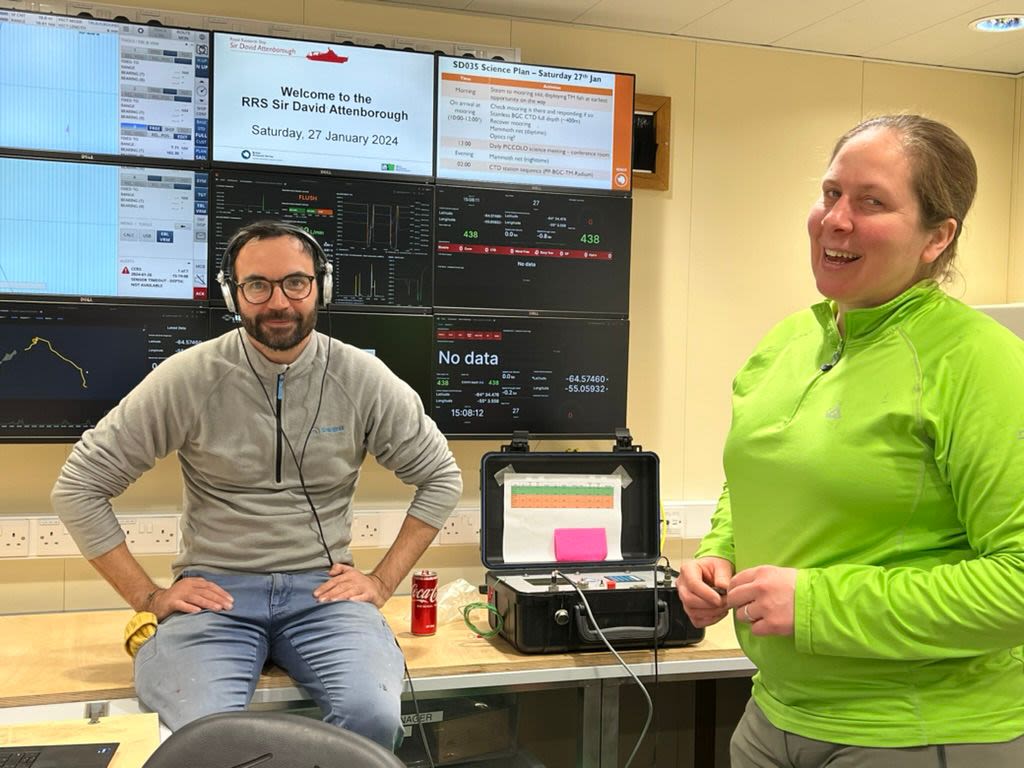
The mooring replies! Image: Prof Karen Heywood
The mooring replies! Image: Prof Karen Heywood
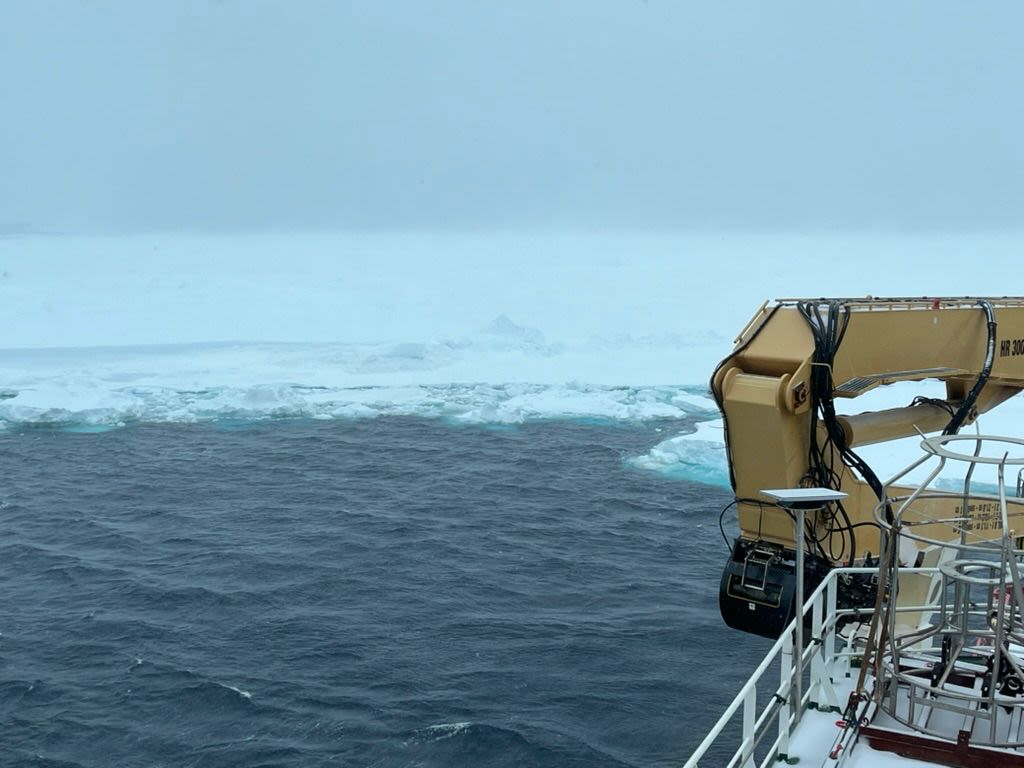
The sea ice advances on us. Image: Prof Karen Heywood
The sea ice advances on us. Image: Prof Karen Heywood
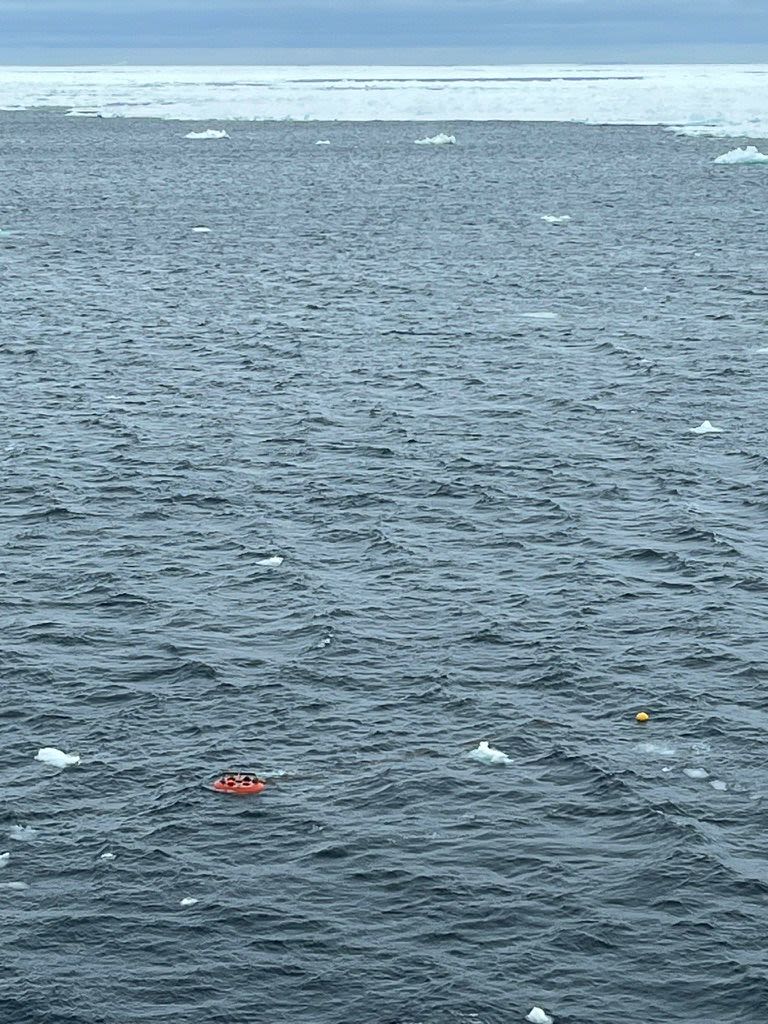
The mooring is spotted! Image: Prof Karen Heywood (UEA)
The mooring is spotted! Image: Prof Karen Heywood (UEA)
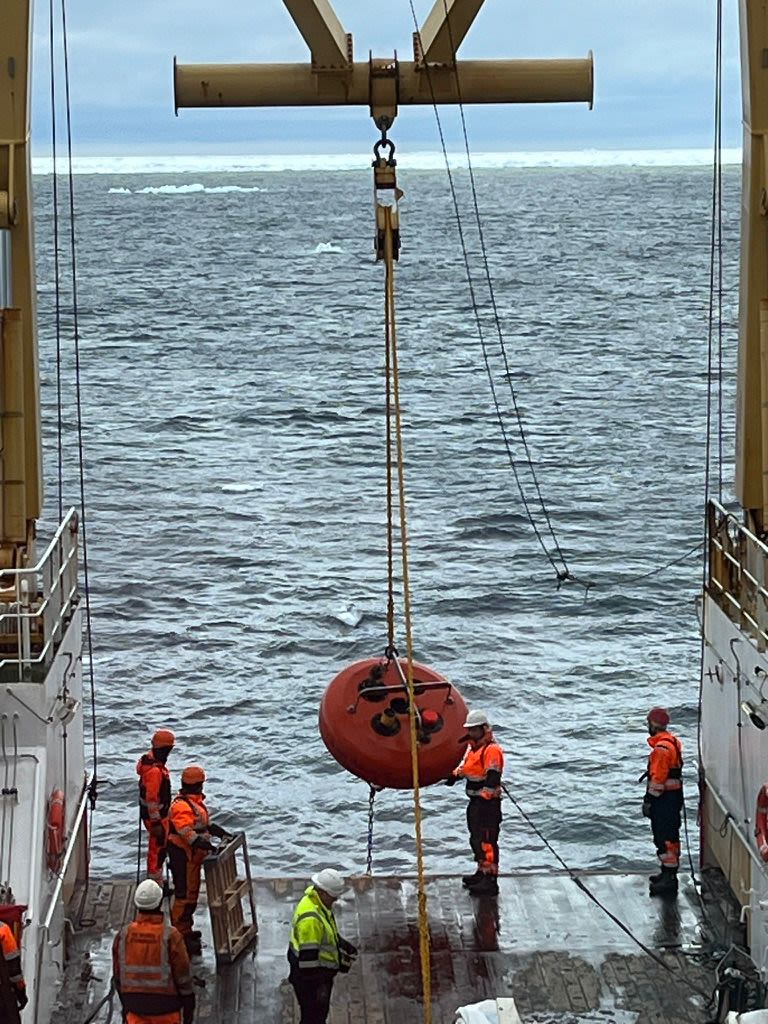
The mooring being raised. Image: Prof Karen Heywood (UEA)
The mooring being raised. Image: Prof Karen Heywood (UEA)
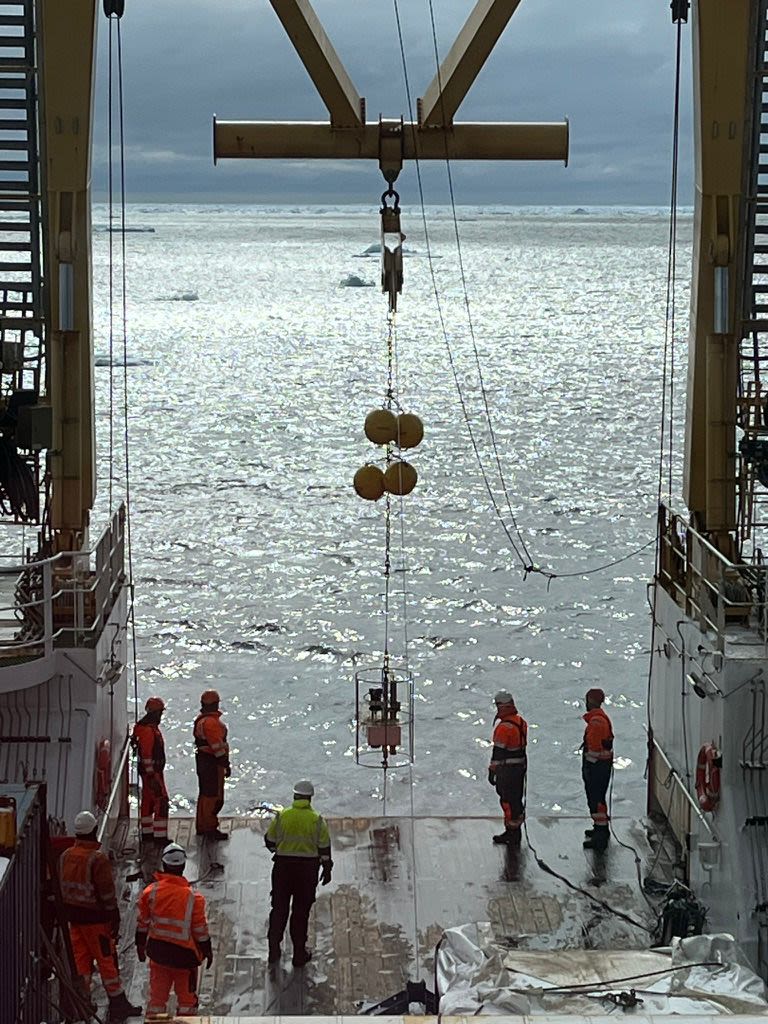
The valuable water samples collected being carefully raised. Image: Prof Karen Heywood.
The valuable water samples collected being carefully raised. Image: Prof Karen Heywood.
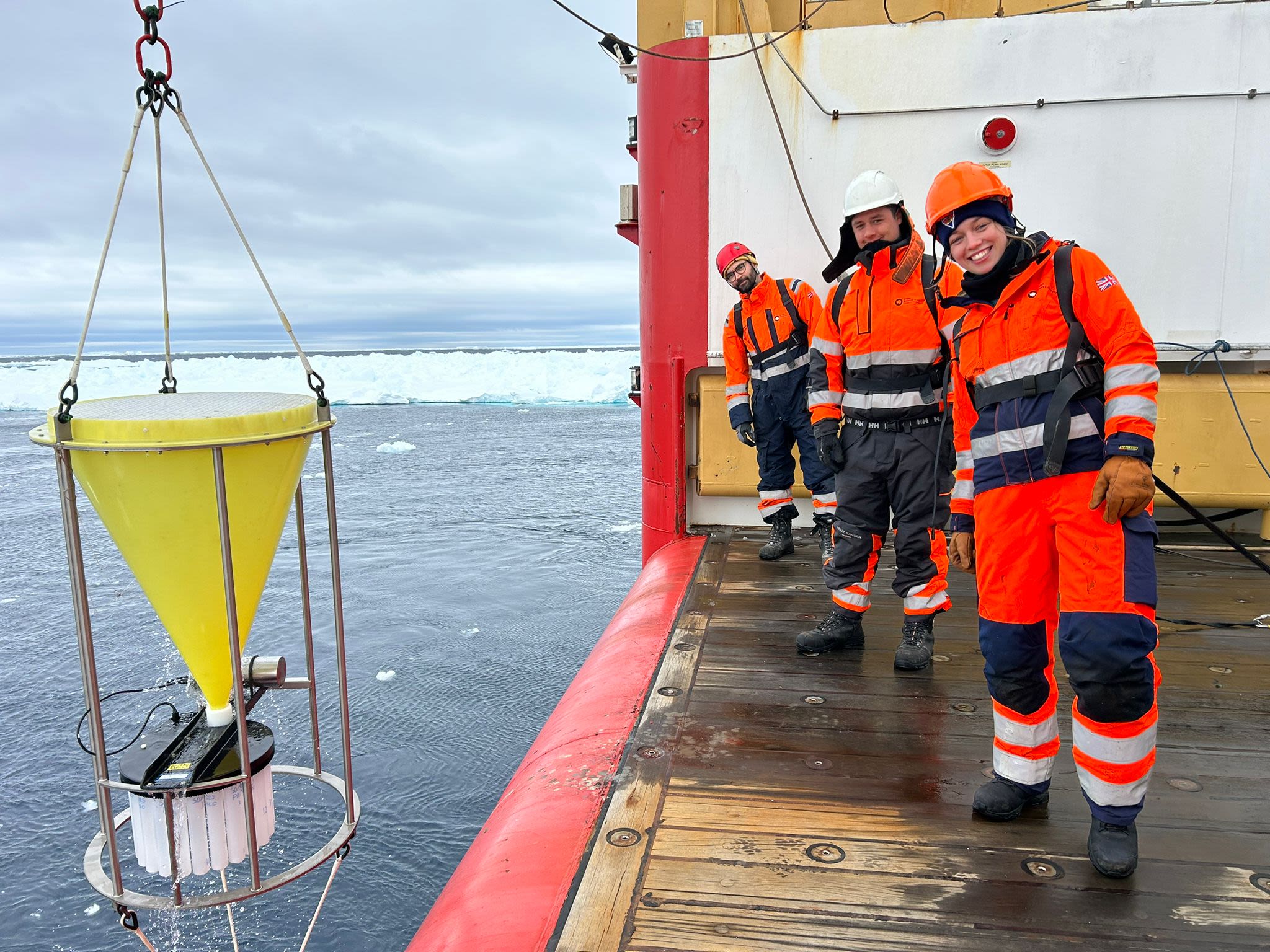
Gareth, Gethyn and Kate alongside the recovered scientific samples. Image: Sophie Fielding (British Antarctic Survey)
Gareth, Gethyn and Kate alongside the recovered scientific samples. Image: Sophie Fielding (British Antarctic Survey)
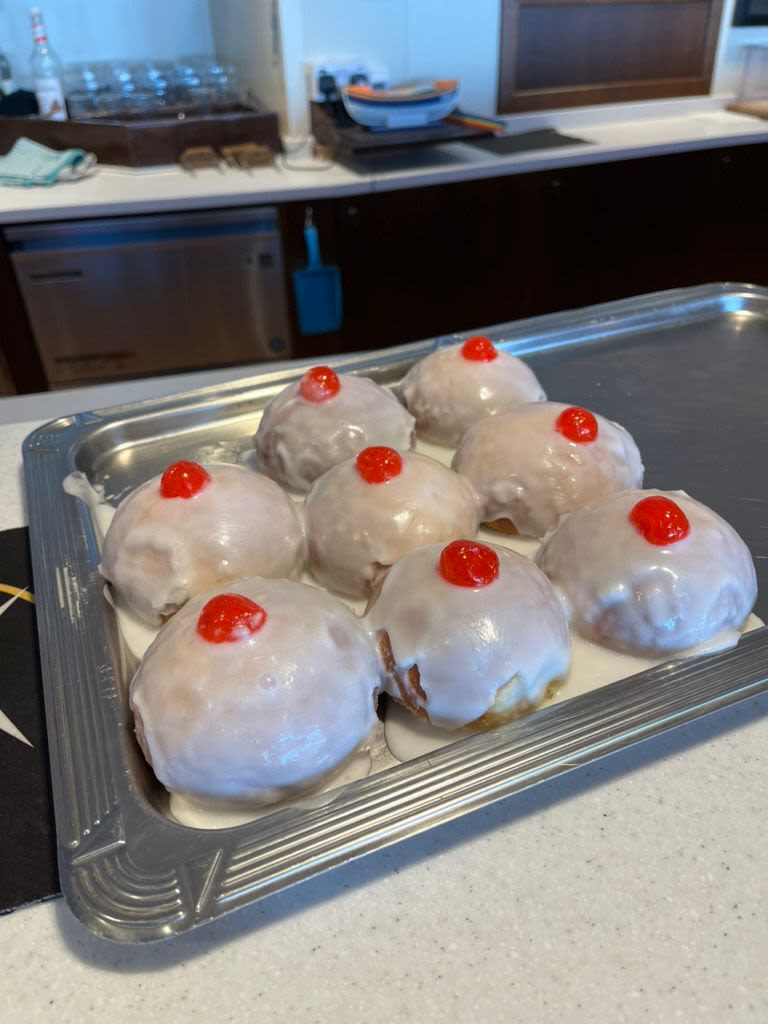
Iced doughnuts to celebrate! Image: Prof Karen Heywood
Iced doughnuts to celebrate! Image: Prof Karen Heywood
A dramatic recovery!
27–28 January 2024
On January 28 2024, the PICCOLO expedition dramatically recovered a mooring they deployed on the Antarctic seabed in March 2023.
Professor Tom Bell from the Plymouth Marine Laboratory explains:
The PICCOLO mooring is a set of equipment on a wire attached to the seabed. It is designed to periodically make measurements and collect samples from the surrounding seawater. It is about 80m long and was deployed on the seabed in 400m deep water in March 2023. The mooring has sat on the seabed throughout the Antarctic winter, narrowly avoiding getting smashed to pieces by various icebergs, including A23 (which is twice the size of London!).

The mooring has a close encounter with iceberg A23. Image: Yixi Zheng (UEA) with source material from NASA’s Worldview
The data that has been collected is invaluable as it gives information about the processes that take place during winter, when this area is completely covered with ice. These processes affect the flow of water into the deep ocean and the amount of carbon that the water contains. This is a crucial element of the PICCOLO project, and a major scientific win.

Sophie Fielding (BAS) and Gareth Flint (UEA) listening for the mooring Image: Prof Karen Heywood
UEA's Karen Heywood recounts this dramatic recovery:
So early on Saturday (27 Jan) we set off in trepidation from the Seymour islands, and we were pleased to find that the sea ice wasn’t too thick for the ship to reach the site where we had left our PICCOLO mooring. The first thing is to send a “ping” - a short pulse of sound to see whether the gadget that releases the mooring is there. It’s called an acoustic release. Here are British Antarctic Survey’s (BAS) Sophie Fielding and Gareth Flint (UEA) listening carefully to see if the acoustic release answers.

The mooring replies! Image: Prof Karen Heywood
And yes! The mooring replies! It’s there! Everyone celebrates! But Sophie says we shouldn’t celebrate until the mooring is safely onboard the ship. She’s right of course.

The sea ice advances on us. Image: Prof Karen Heywood
We get ready to recover the mooring and its precious year of data. But bad news. We discuss with the captain and the crew and it’s agreed that it’s too risky to send the mooring up to the surface - the sea ice is closing in and drifting quite fast with the currents, so we are afraid the mooring might come up under the sea ice. Visibility is poor as well, so we might not spot it. No point taking a risk at this stage. We decide to wait until the next day.

The mooring is spotted! Image: Prof Karen Heywood (UEA)
On Sunday morning the conditions are better - it’s not as foggy, and there is a suitable gap in the sea ice for release the mooring into. We agree to release the mooring, and send the acoustic signal. It should be on its way to the surface. Then we wait, for what seems like ages. Everyone is up on the ship’s bridge looking out, waiting to see a small orange blob in a large expanse of blue and white. After about 5 minutes there’s a shout “there it is!” and everyone shouts and cheers.

The mooring being raised. Image: Prof Karen Heywood (UEA)
Now the ship’s crew get into action like a well-oiled machine, carefully grappling for the buoy floating at the surface, and then moving it painstakingly to the back of the ship. It wouldn’t do for the ship to run it over now and lose it. Then they start to winch in the instruments one by one. As each one comes onboard we breathe another sigh of relief. The big orange buoy has instruments on it to measure the ocean currents.

The valuable water samples collected being carefully raised. Image: Prof Karen Heywood.
We’re particularly excited about this instrument - it captured a bagful of seawater near the seabed every few weeks, and we’re going to analyse this water to see how much carbon is in the water.

Gareth, Gethyn and Kate alongside the recovered scientific samples. Image: Sophie Fielding (British Antarctic Survey)
Once everything was safely onboard, we celebrate! But Sophie says, don’t celebrate yet until we see whether all the instruments actually measured anything during the year. Maybe they stopped working on the first day. She’s right, of course.
The next few hours are spent checking the instruments, and it’s good news! We managed to collect some water in the bags. We don’t think anyone has ever done this before in the Antarctic. And there are some exciting data sets that we’re now itching to get analysing.
We learn that our mooring did indeed have an eventful year - one of the sensors is full of mud! We’ll have to see how close the mooring came to that pesky iceberg. But luckily the mooring survived. What a day! Everyone is elated, but no time to rest - the mooring team get busy preparing all the instruments to put the mooring back in the water next day. We want to get another few weeks of science data, this time more frequently. But maybe time for a celebratory iced doughnut?

Iced doughnuts to celebrate! Image: Prof Karen Heywood
Our journey south
18–24 January 2024
"There are suddenly very few people at breakfast."
After mobilisation, the PICCOLO team ventured south, encountering stunning wildlife, otherworldly views and, of course, some bad weather.
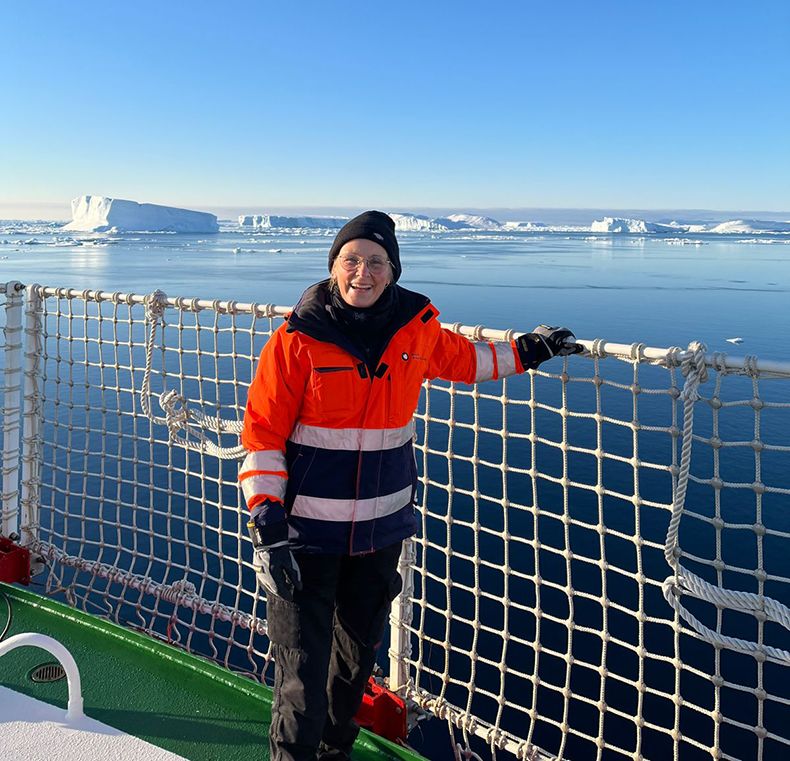
Prof Karen Heywood aboard the RRS Sir David Attenborough in the Antarctic. Image: Isabel Seguro.
From Prof Karen Heywood, PICCOLO Principal Investigator (21 January):
We’ve now left the Falkland Islands where the ship refuelled, and we’re heading south across Drake Passage - next stop Antartica! Drake Passage is notorious for its strong winds and big waves, and the last day has been pretty bumpy.
You know the weather is bad when:
· There are suddenly very few people at breakfast
· Your cabin looks like a bomb hit it, if you forget to put everything away
· You can’t walk in a straight line
· Your shower curtain flies out and attaches to you
· There is a sticky mat on the tables at lunchtime for you to put your plates and glasses on
· The chairs have bungee cord around them
· The fridge door is bolted shut.
Tomorrow we do some science dry-runs to make sure all the equipment we brought is working properly.
Read more about the journey through Drake Passage here: https://www.nationalgeographic.com/environment/article/drake-passage-antarctica-dangerous-waters.

Prof Karen Heywood aboard the RRS Sir David Attenborough in the Antarctic. Image: Isabel Seguro.
Prof Karen Heywood aboard the RRS Sir David Attenborough in the Antarctic. Image: Isabel Seguro.
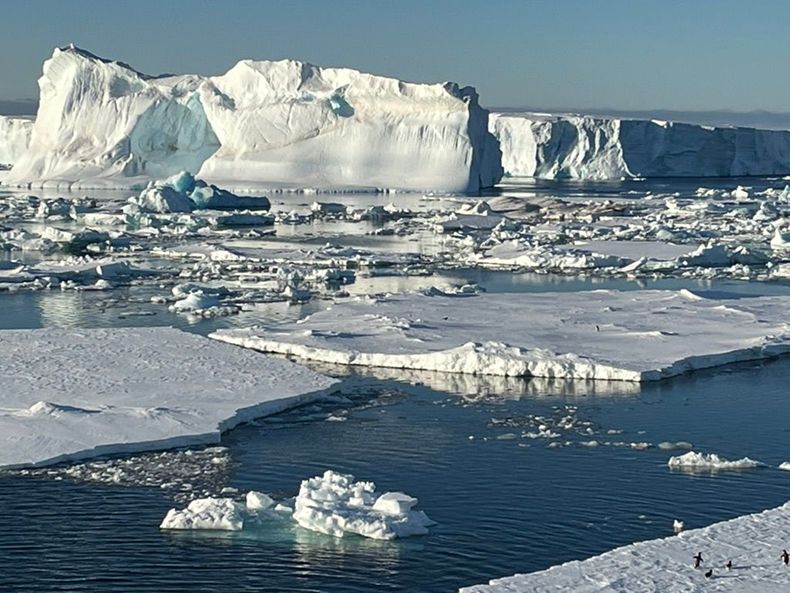
A dramatic icescape on the approach to James Ross Island. Credit: Prof Karen Heywood.
A dramatic icescape on the approach to James Ross Island. Credit: Prof Karen Heywood.
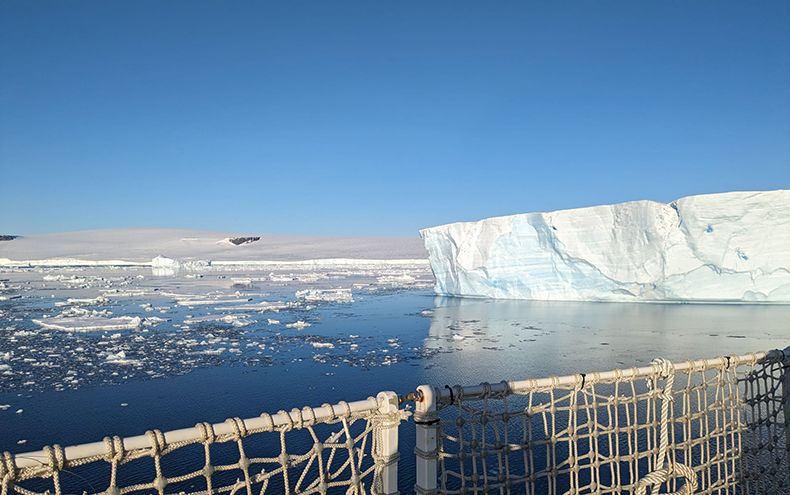
Views of an ice shelf from the ship. Credit: Tom Bell (Plymouth Marine Laboratory)
Views of an ice shelf from the ship. Credit: Tom Bell (Plymouth Marine Laboratory)
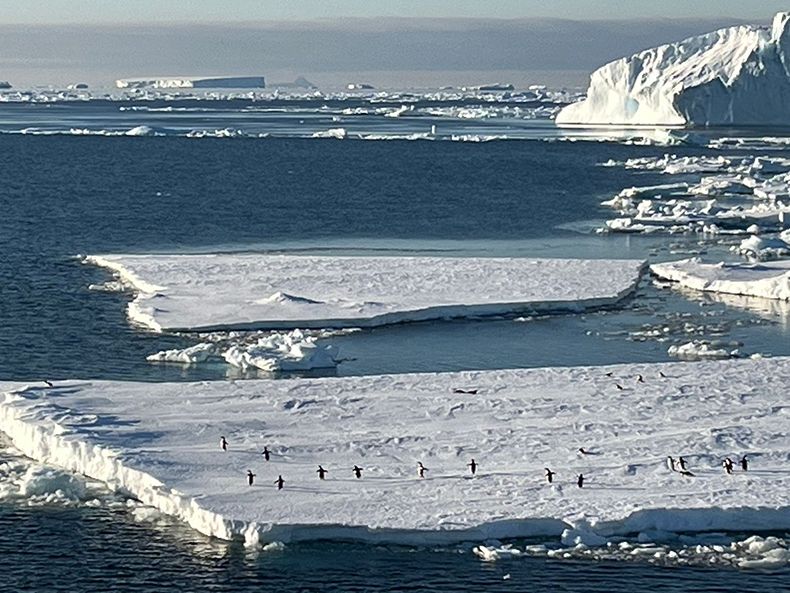
Spectacular views as the the team approach James Ross island. Look carefully to spot the penguins on the ice floe scurrying away from the ship! Credit: Prof Karen Heywood.
Spectacular views as the the team approach James Ross island. Look carefully to spot the penguins on the ice floe scurrying away from the ship! Credit: Prof Karen Heywood.
Setting off
17 January 2024
After beginning their journey at Norwich train station, the UEA team, including Lead Principal Investigator Prof Karen Heywood, made their way to Punta Arenas - a 13000 km and 36 hour trip - on the southernmost tip of South America. The cruise embarked from there on 17 January and is due to return in mid-March.
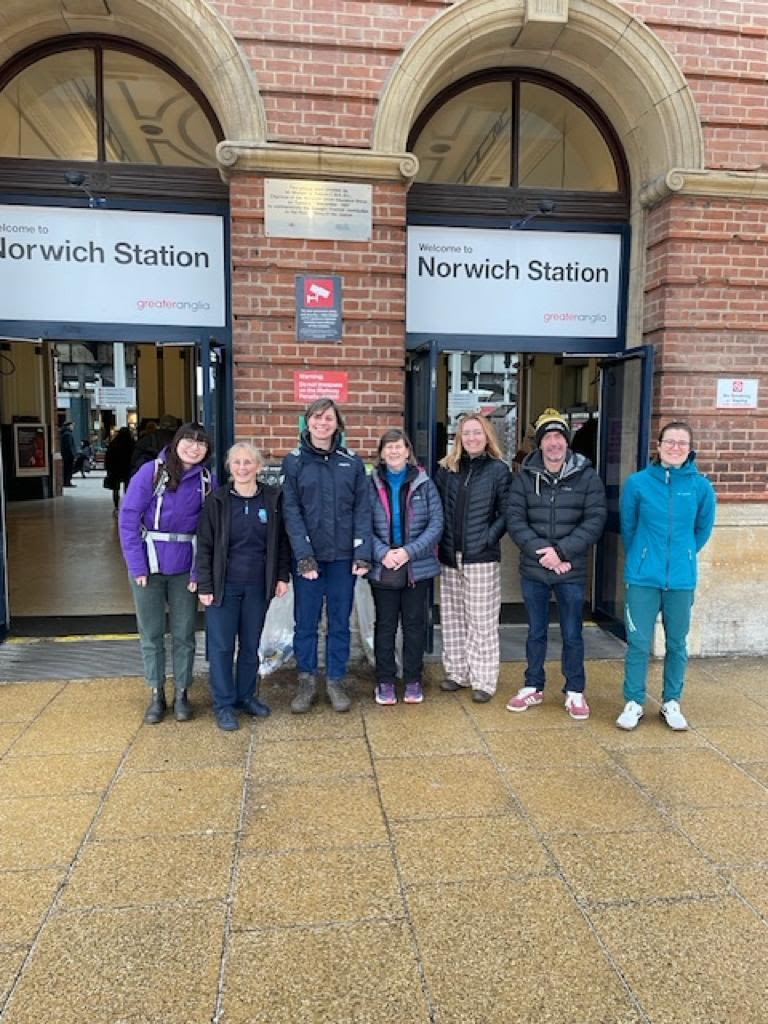
The UEA PICCOLO team at Norwich train station, about to embark on a 13000 km trip to Punta Arenas, from where the expedition embarks.
On the RRS Sir David Attenborough, the team joined up with researchers from other institutions to form an international research group of 32.
The PICCOLO research cruise will travel 1500 km to the Weddell Sea, east of the Antarctic Peninsula, where the research will finally begin! On the way they will drop off teams of geologists and paleoclimate scientists at Seymour Island and James Ross Island. Those teams will camp there to complete their fieldwork.
From Ruth Airs, Plymouth Marine Laboratory:
Mobilisation or getting set up for a science cruise is such an unwieldy beast. The whole process started months ago when we packed all our kit in the UK for it to be loaded onto the Sir David Attenborough in containers in Harwich. Typically seven or eight scientists will fill a full size shipping container to the brim with aluminium boxes, instruments, and specialist equipment carefully packed and labelled. Packing is a skill in itself. It’s probably most similar to moving house, except you have to buy everything you need first, in the right quantity for the whole of the cruise, make sure it will arrive in good time and not forget anything you will need.
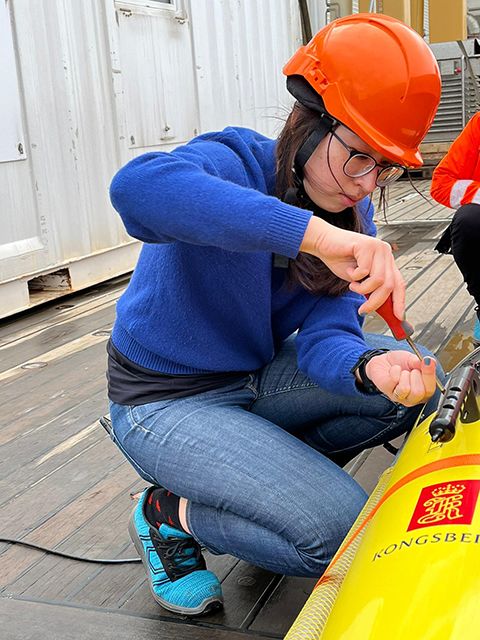
UEA's Yixi Zheng working hard to set up one of the ocean gliders. Image: Prof Karen Heywood.
So the process of mobilisation starts with three or more containers full of kit on the ship and 25+ scientists eager to get started unpacking. We have to make a plan and co-operate as space is limited, kit can be heavy and there are lots of potential hazards/bulkheads to pass to get a single box in a useful place.
That’s once everyone has found all their safety gear.
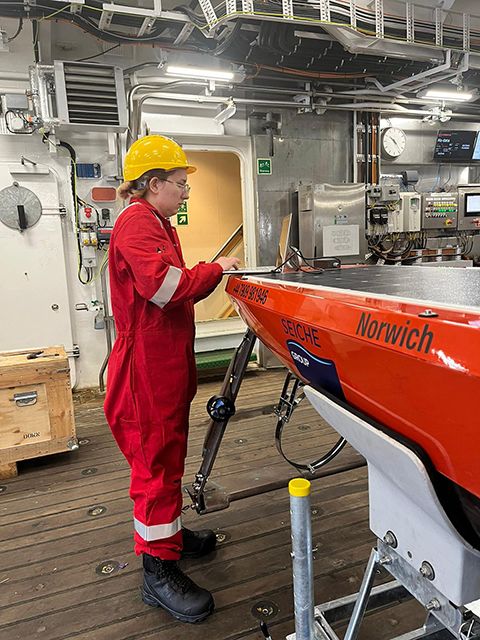
UEA PhD student Beth Siddle conducts the final checks of autonomous surface vessel Caravela. Image: Prof Karen Heywood.
Once everyone has access to their boxes and their work area, unpacking and set up can start. This is a slow process with problem solving along the way. How best to position and secure everything so science can be conducted safely while the ship is moving (sometimes a lot). Gaffa tape, ratchet straps, bungees, hooks, rope and screws become a scientist’s go-to. We also have to stop for safety briefings and other essential preparations for going to sea. We tend to work long hours to make sure we can meet the deadline of the ship’s departure.
"What are scientists like during this process? Well, we tend to be outwardly pleasant and humorous"
What are scientists like during this process? Well, we tend to be outwardly pleasant and humorous (it’s great to finally be here and the promise of getting started). We help each other out and support each other. Inwardly most people feel quite anxious until the chaos starts to resemble a working laboratory, and we know we can finish.
In fact, in a science briefing yesterday our principal scientist asked if anyone was feeling anxious. We all laughed because everyone was feeling anxious – it was the last full day of mobilisation. We did it though; everything is safely secured, and we are at different stages of ready to conduct science.
And we set sail about four hours ago.

The UEA PICCOLO team at Norwich train station, about to embark on a 13000 km trip to Punta Arenas, from where the expedition embarks.
The UEA PICCOLO team at Norwich train station, about to embark on a 13000 km trip to Punta Arenas, from where the expedition embarks.

UEA's Yixi Zheng working hard to set up one of the ocean gliders. Image: Prof Karen Heywood.
UEA's Yixi Zheng working hard to set up one of the ocean gliders. Image: Prof Karen Heywood.

UEA PhD student Beth Siddle conducts the final checks of autonomous surface vessel Caravela. Image: Prof Karen Heywood.
UEA PhD student Beth Siddle conducts the final checks of autonomous surface vessel Caravela. Image: Prof Karen Heywood.
